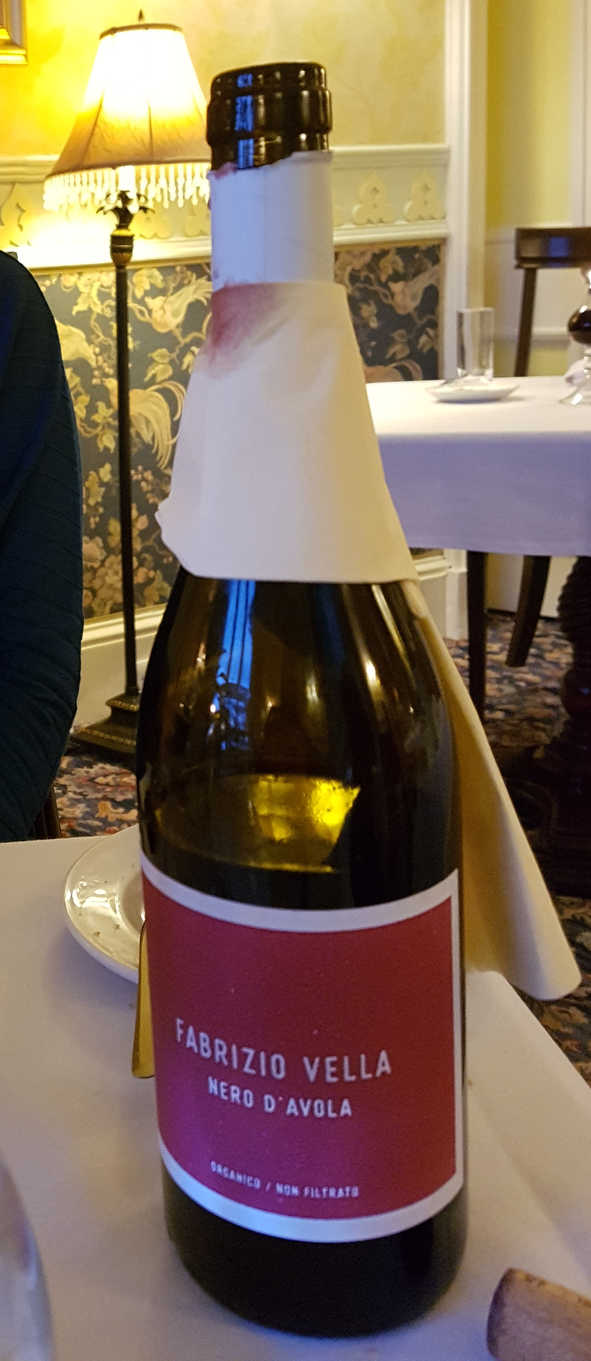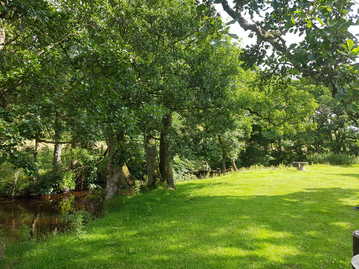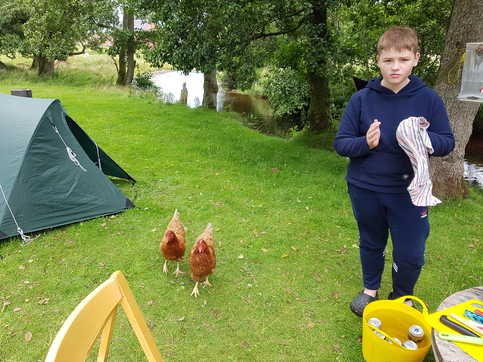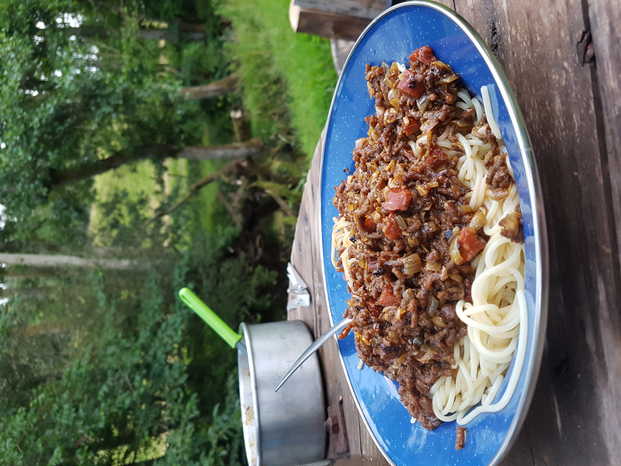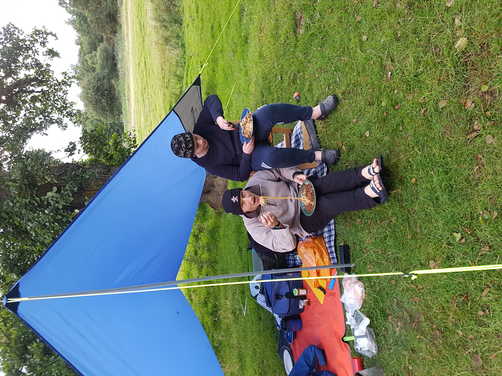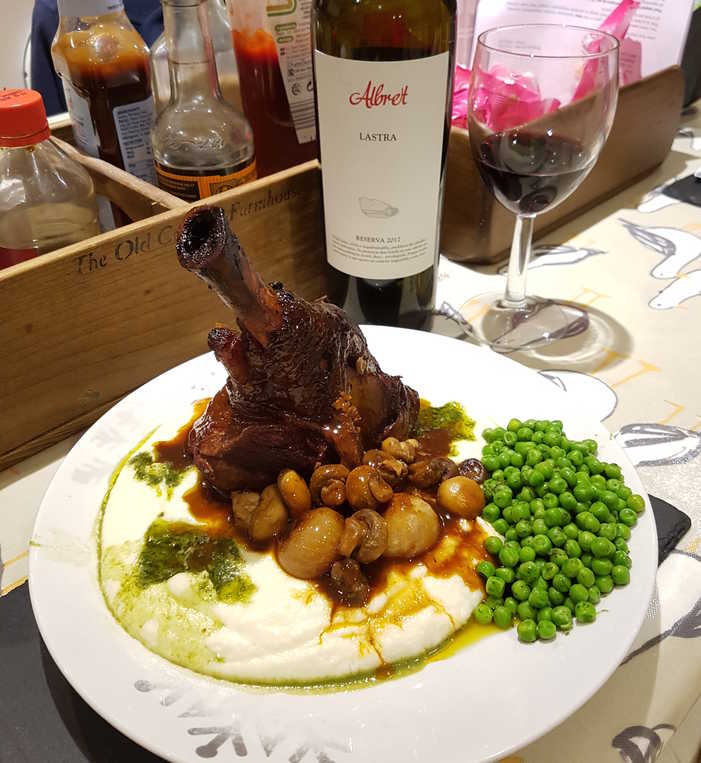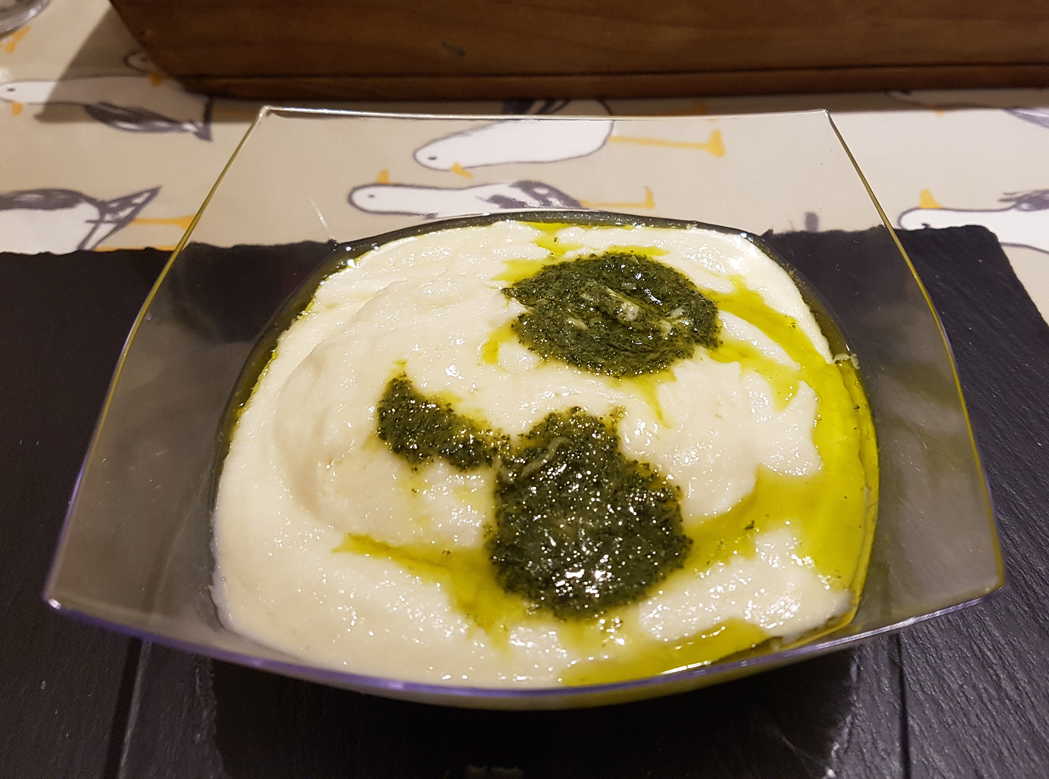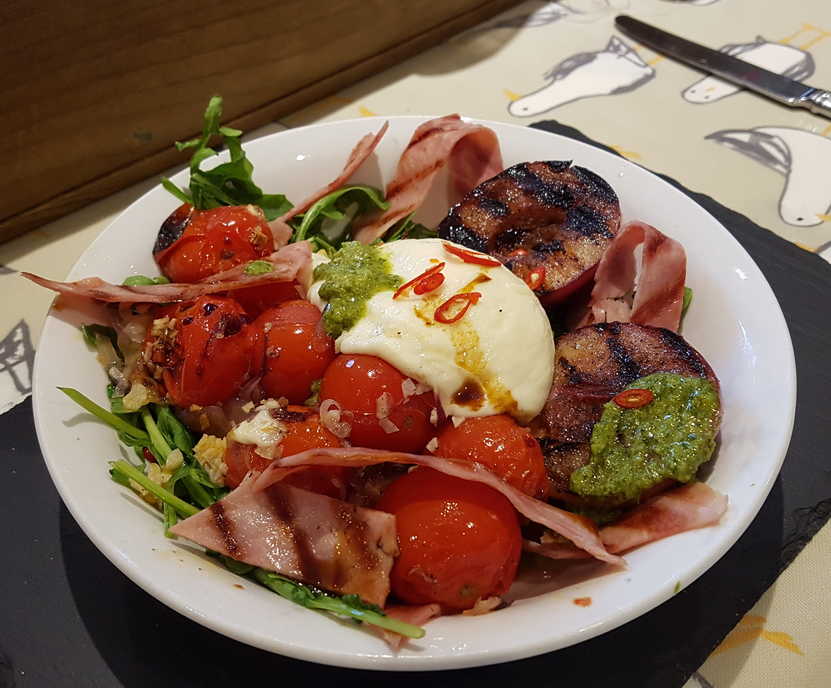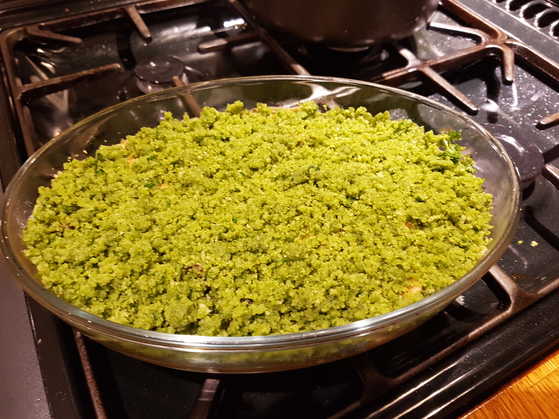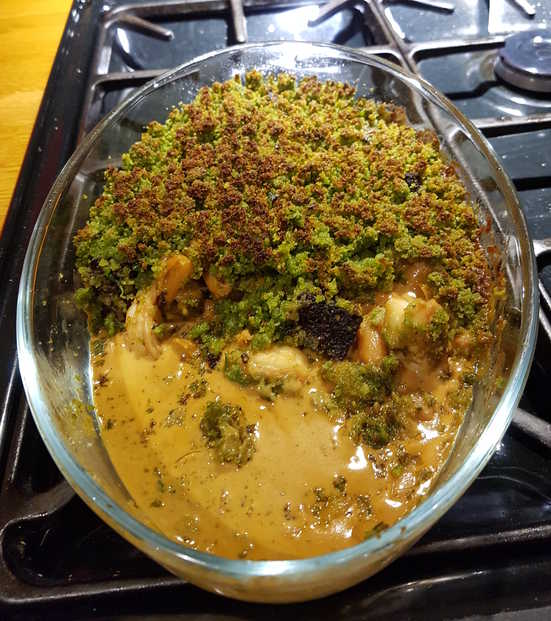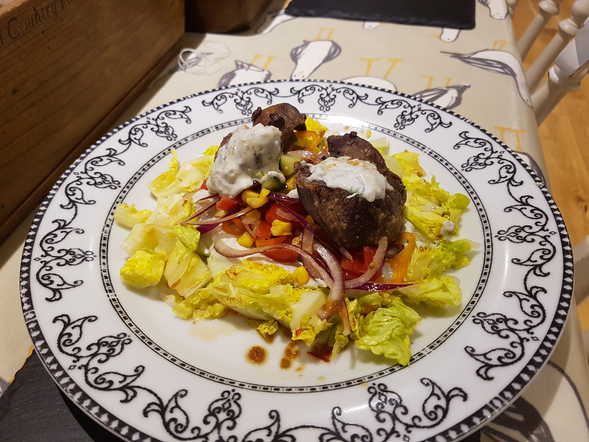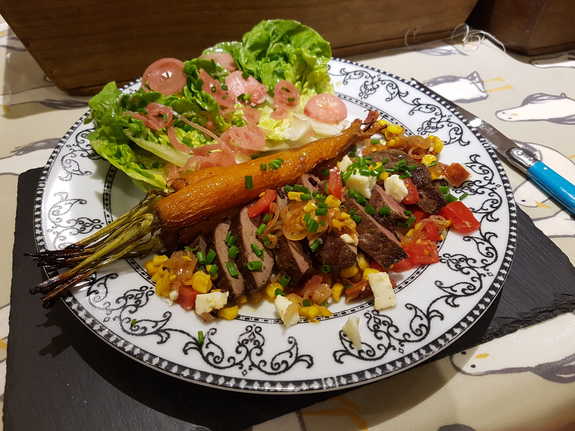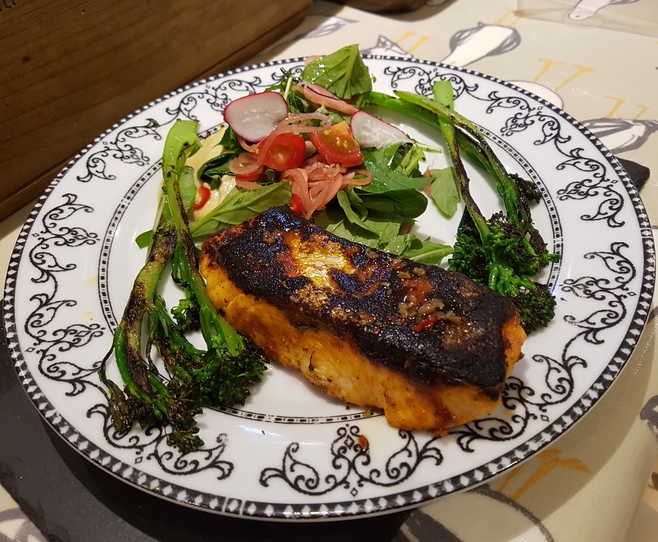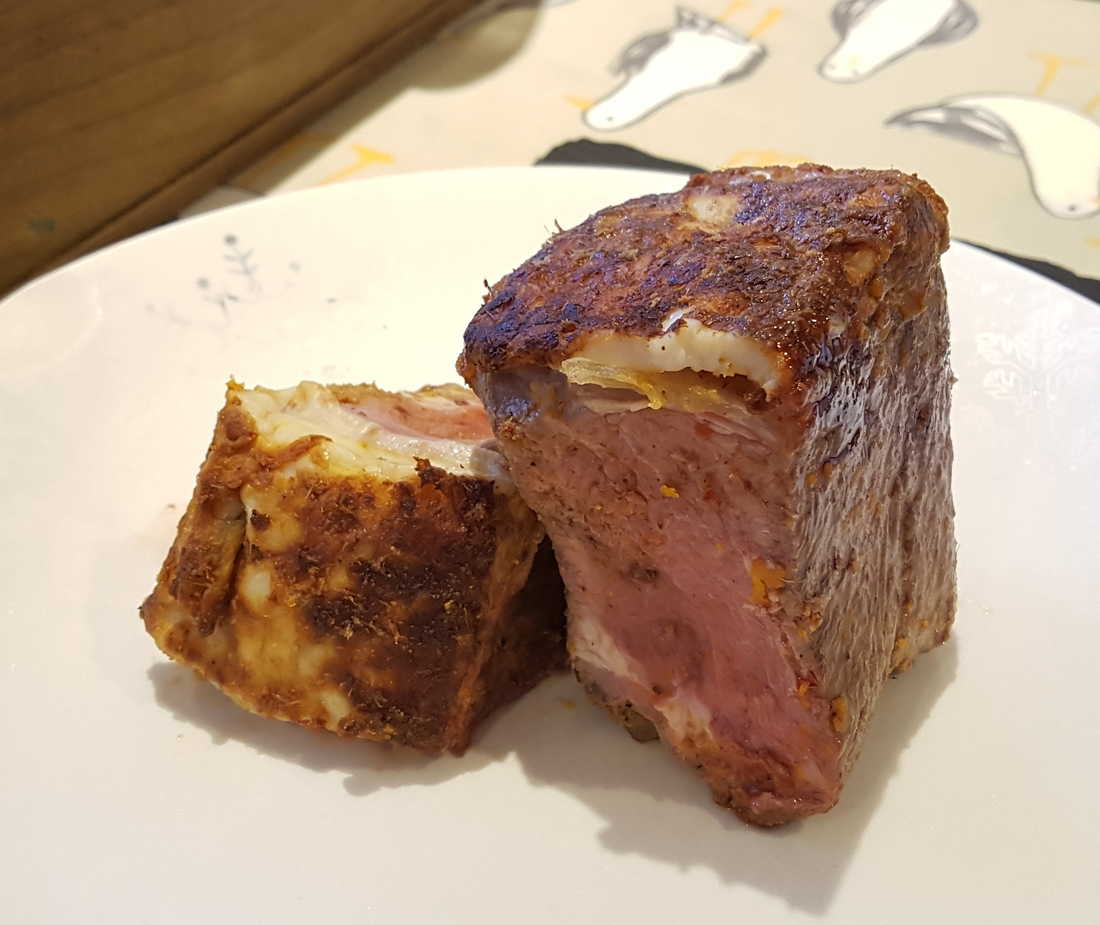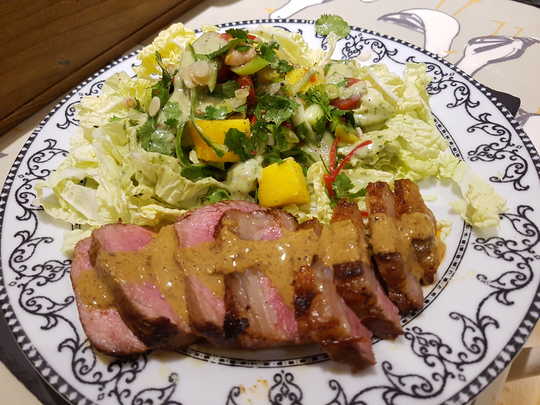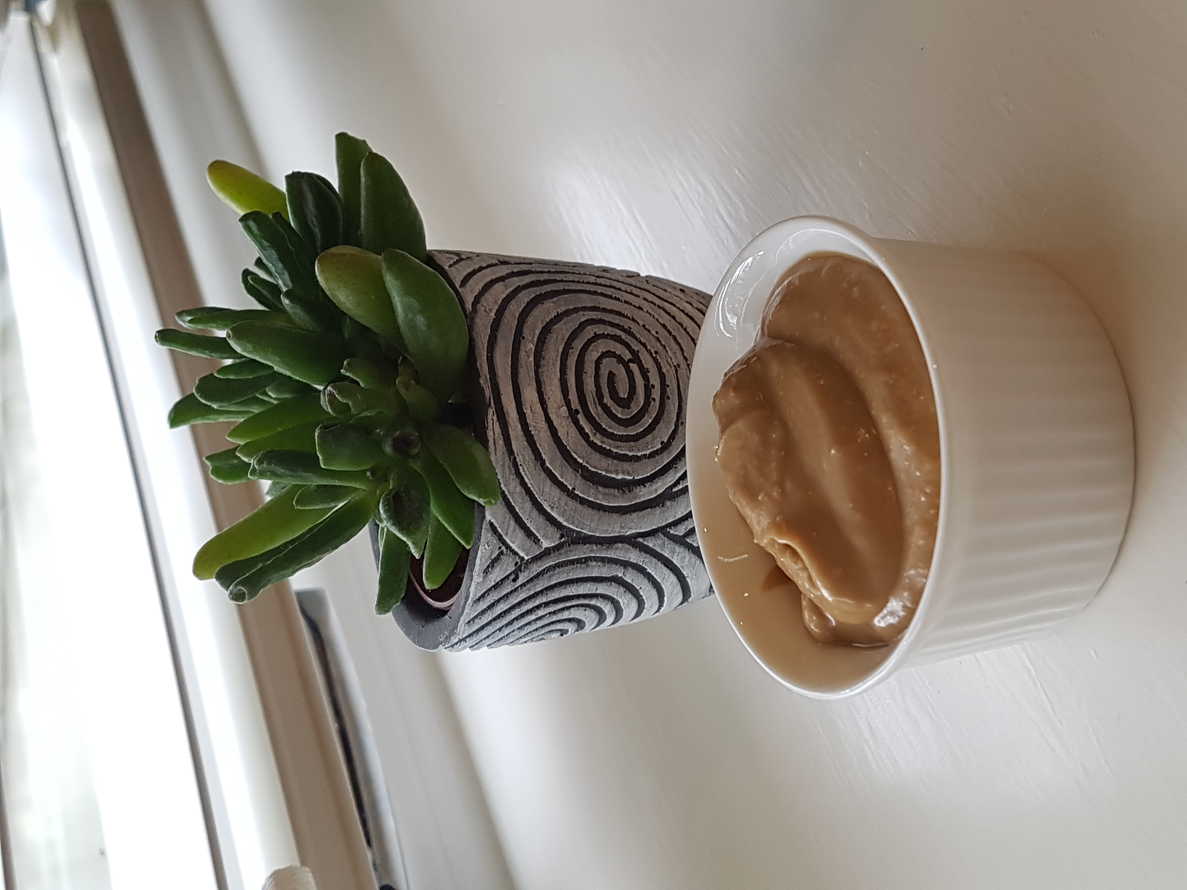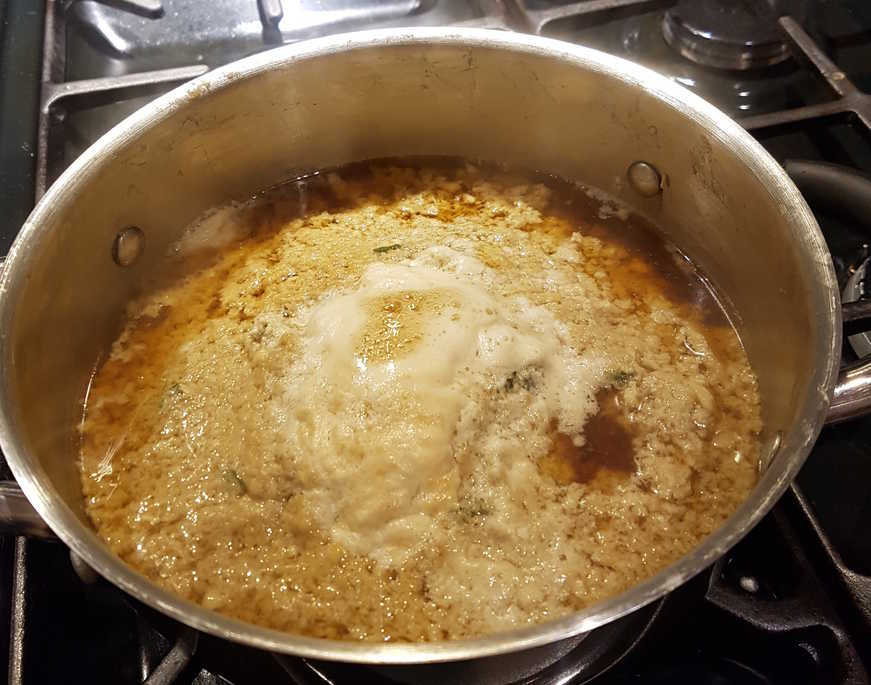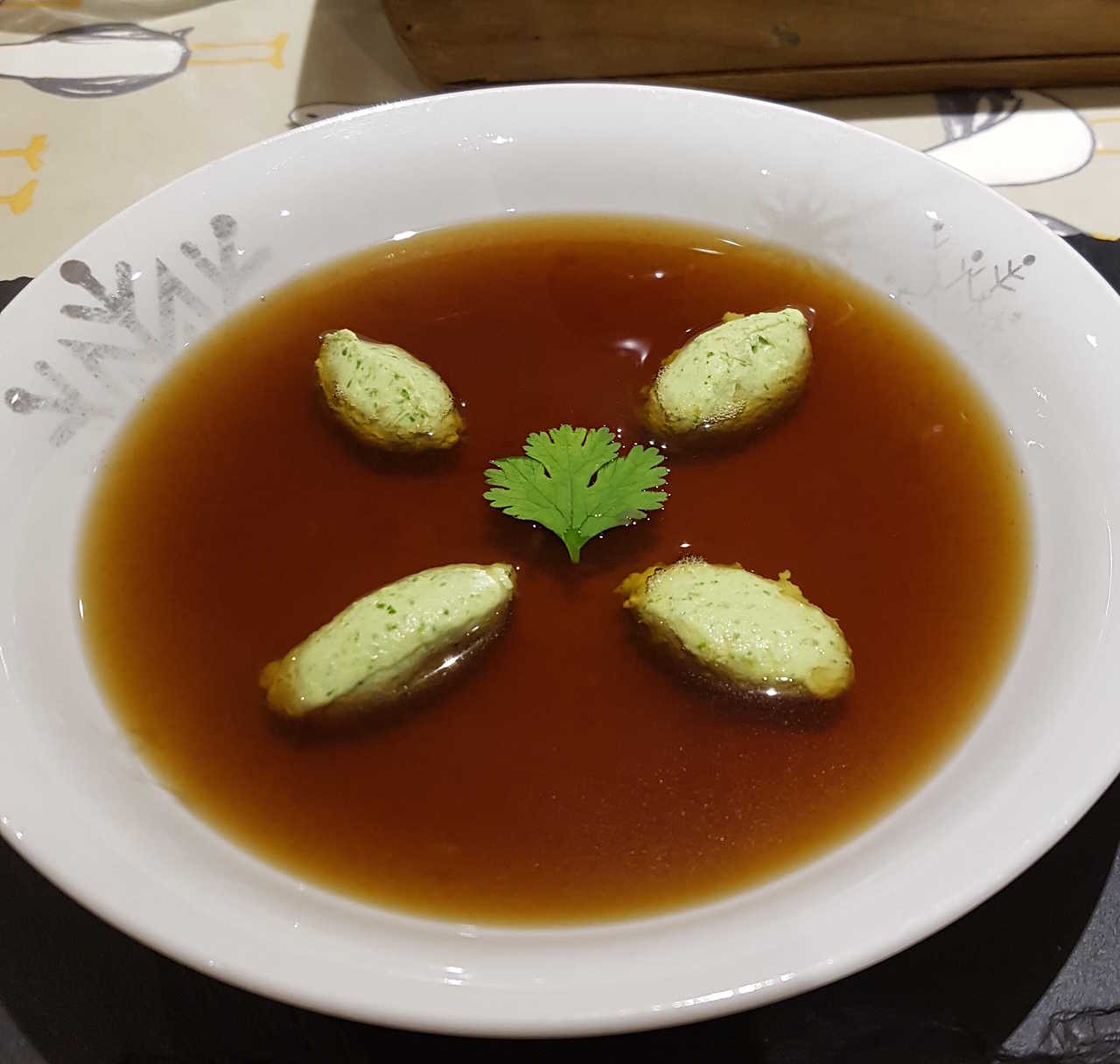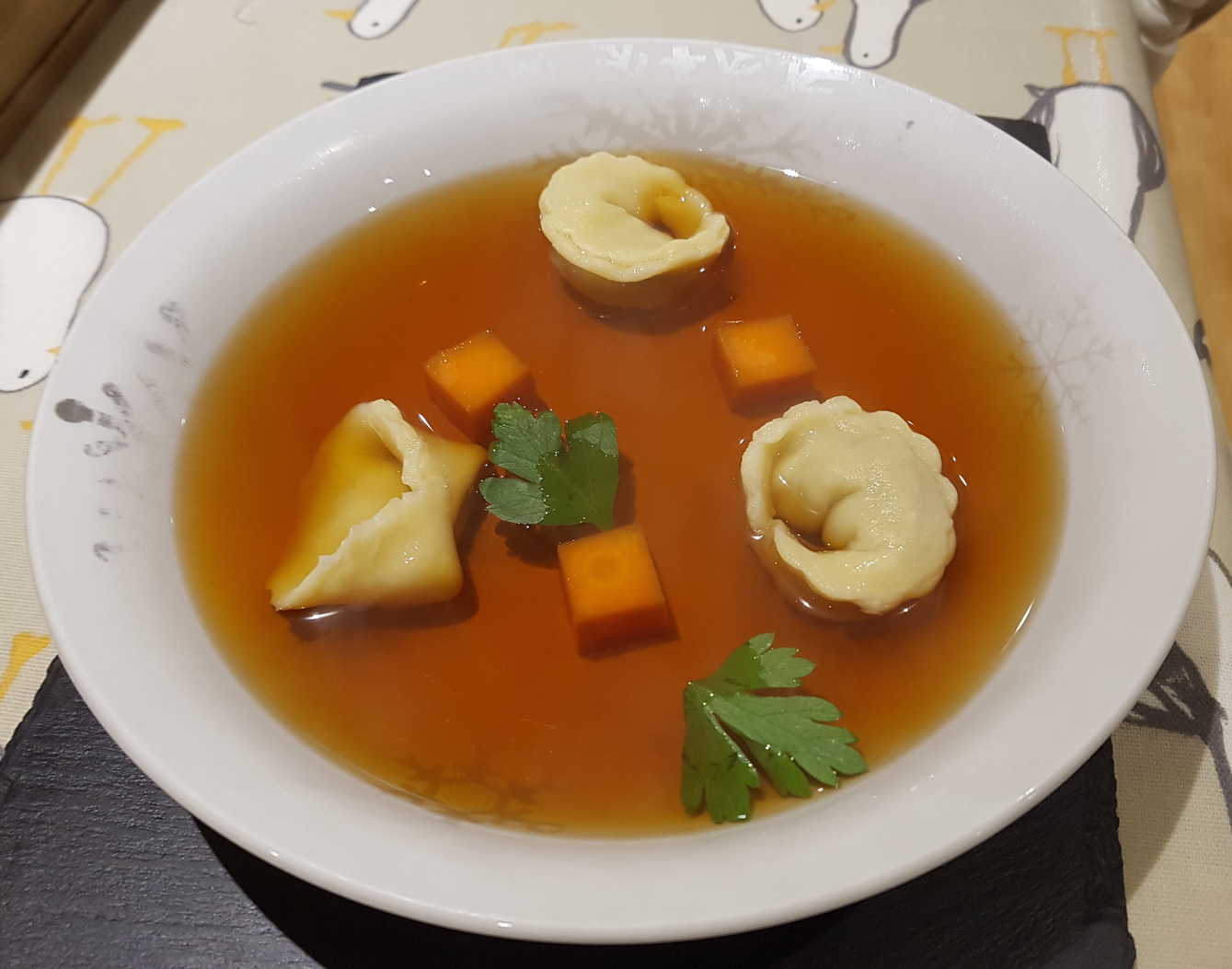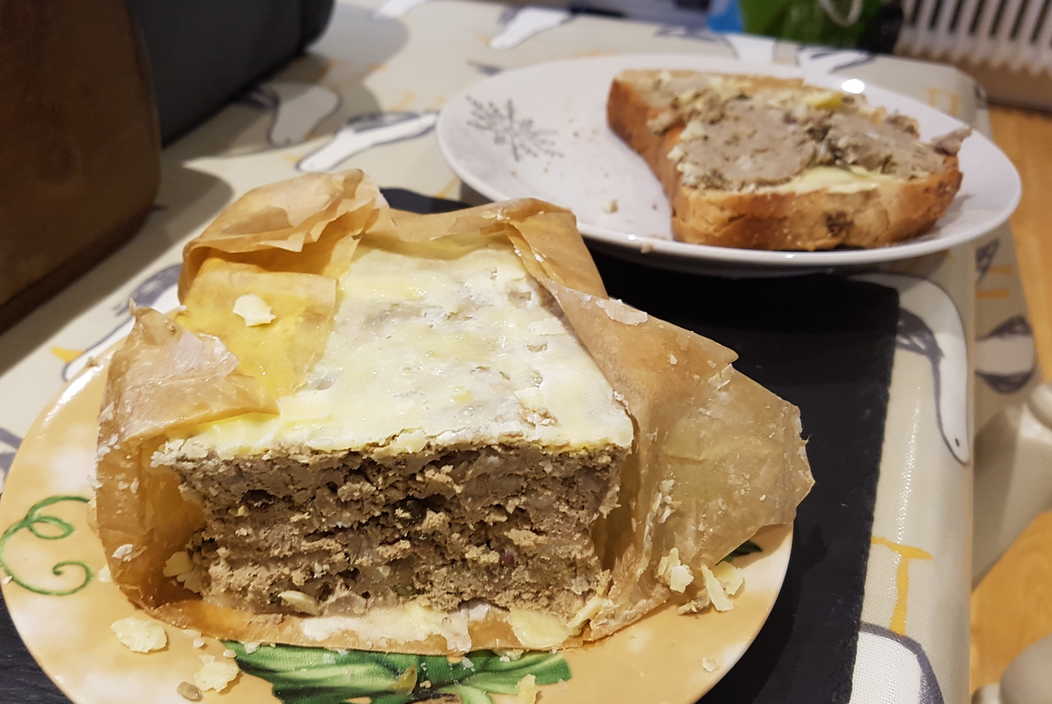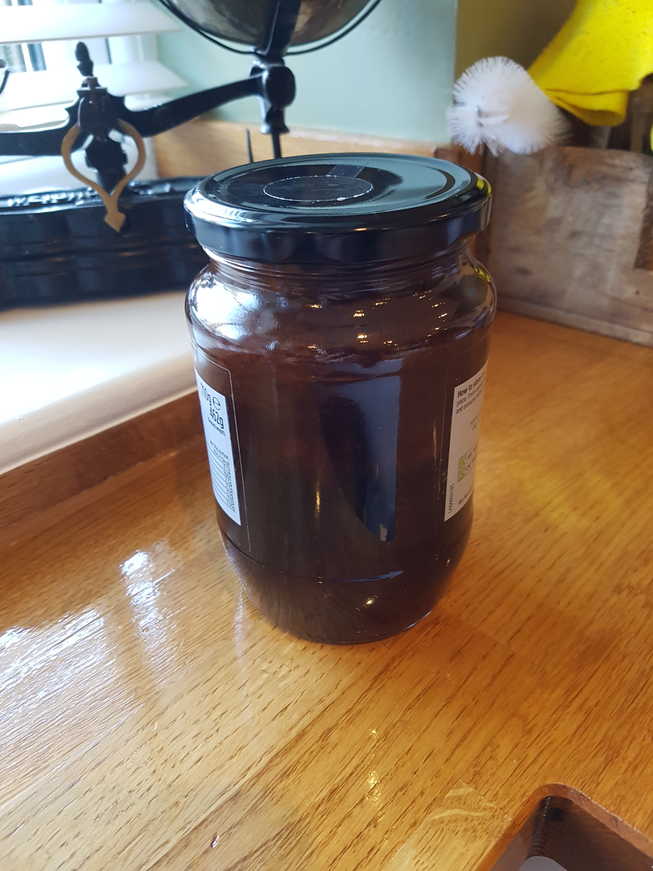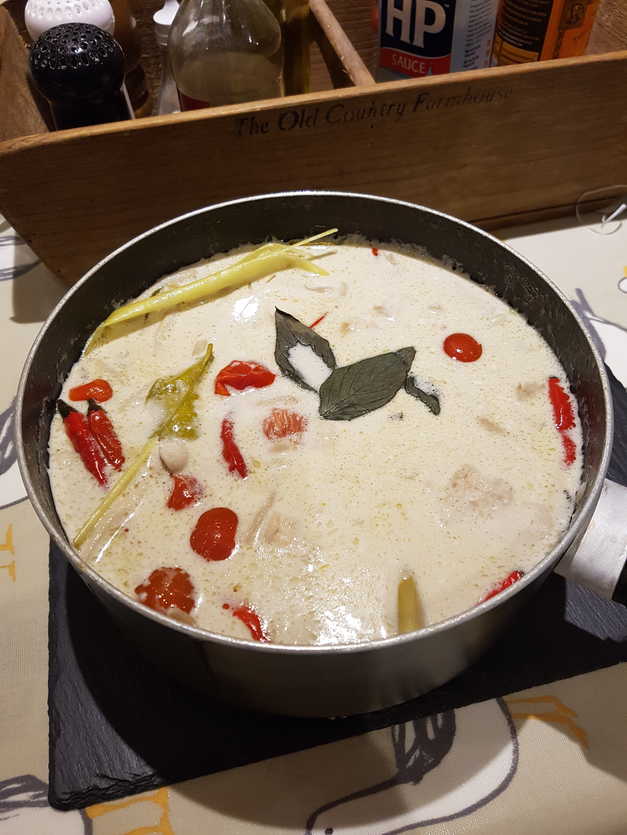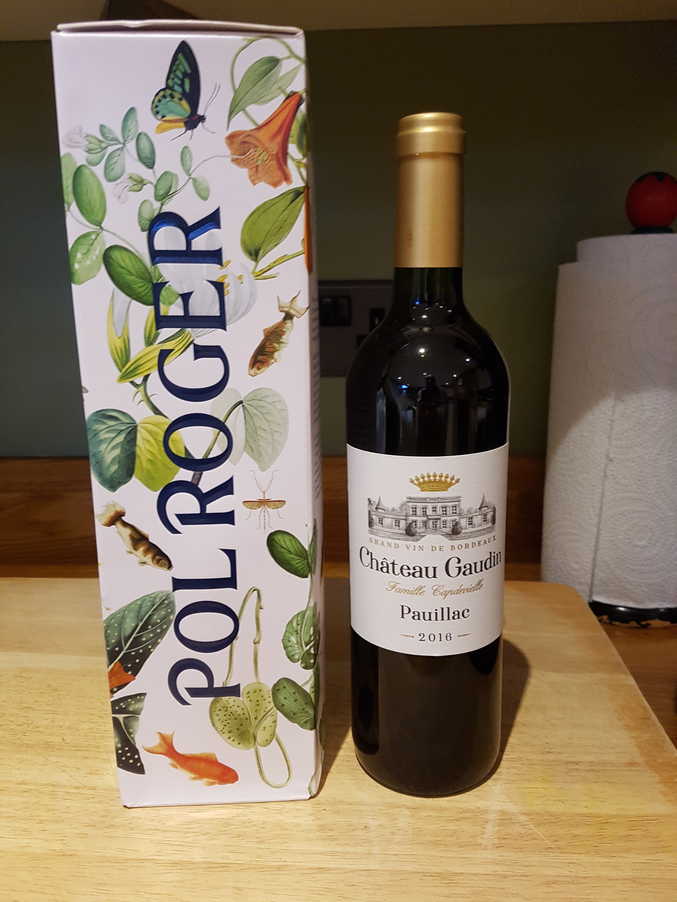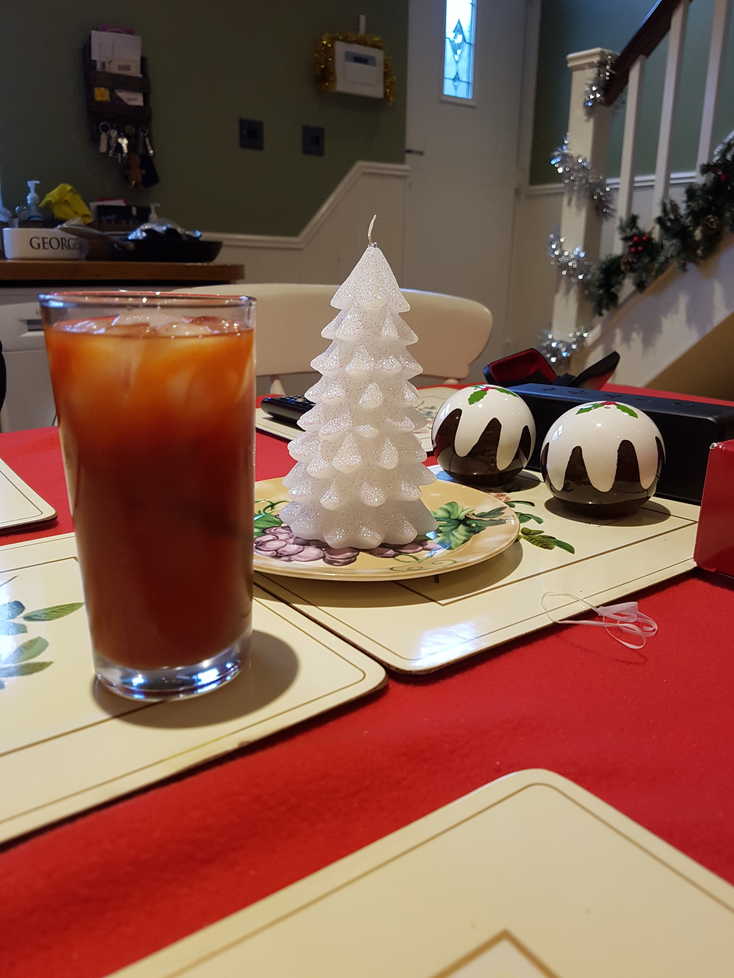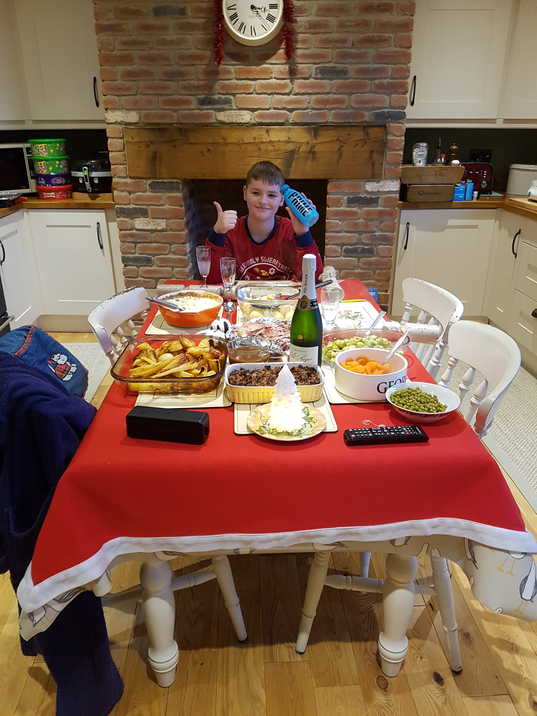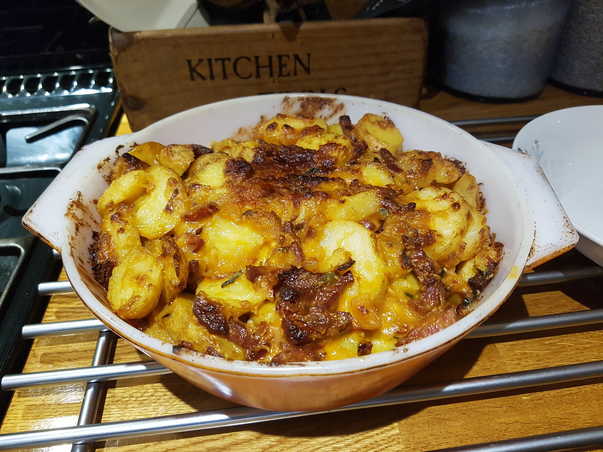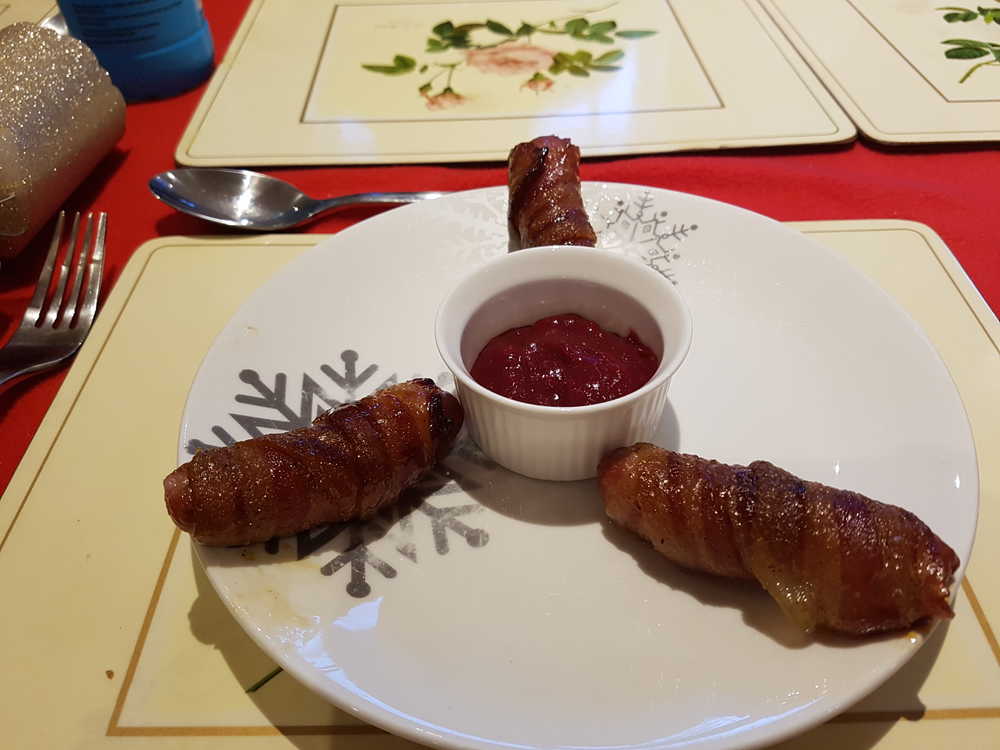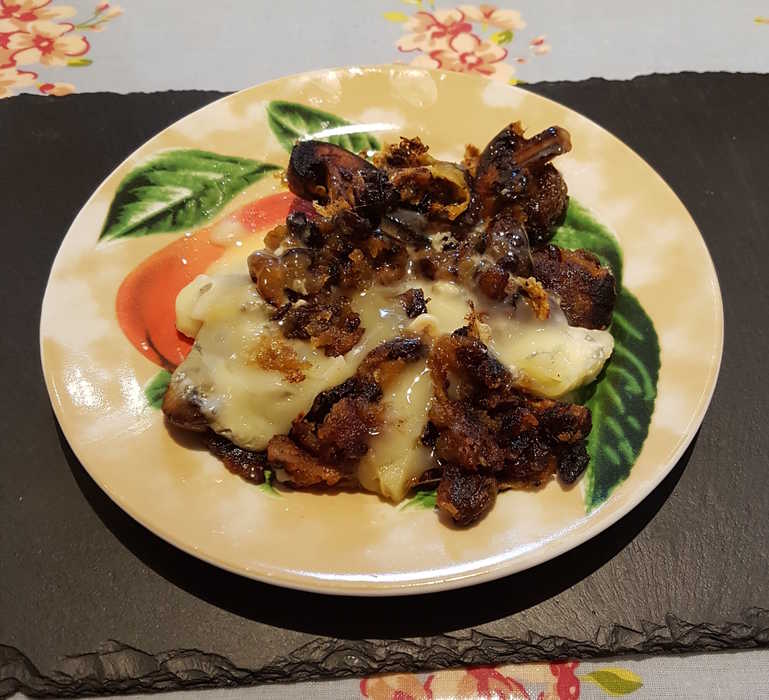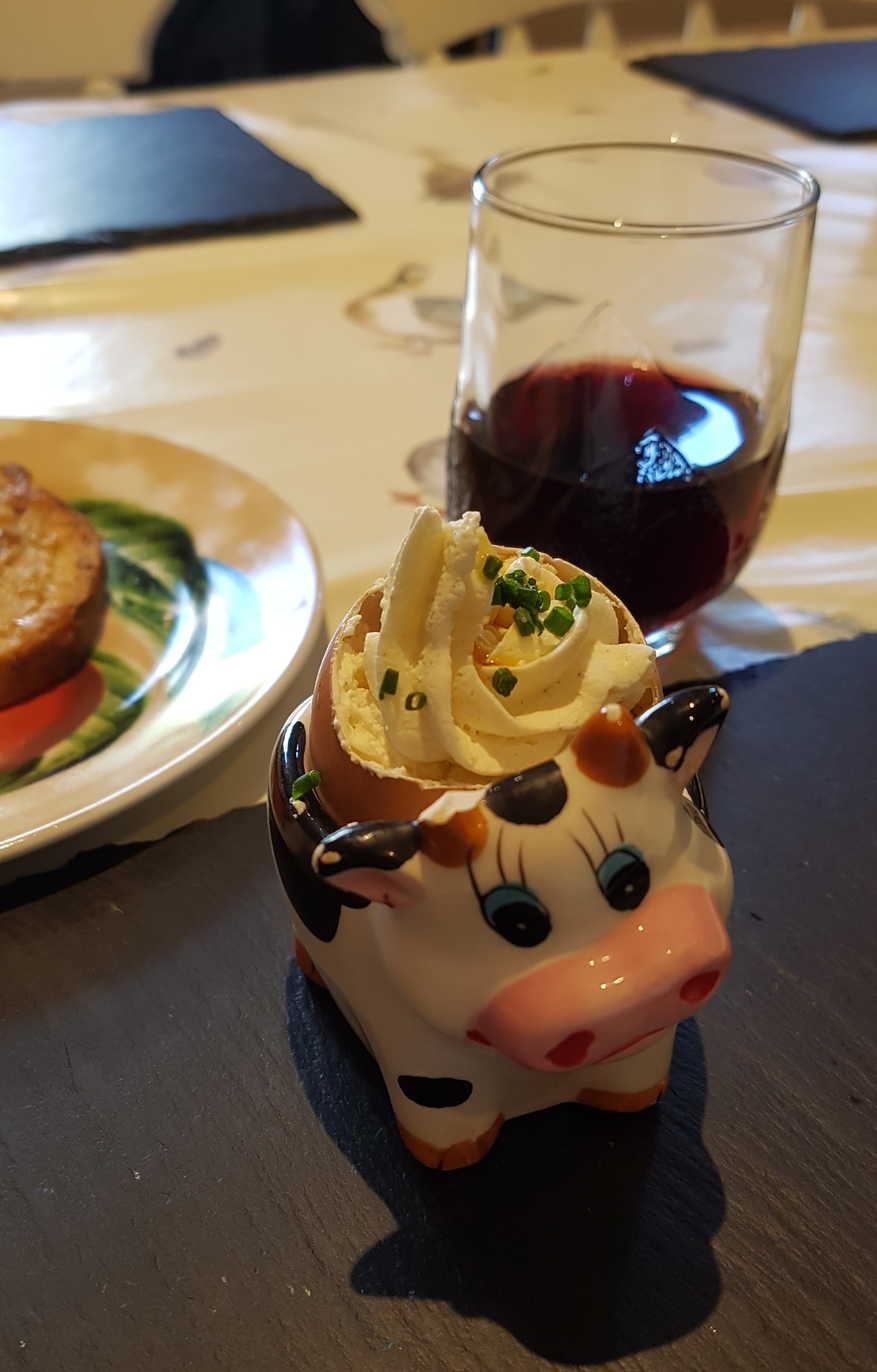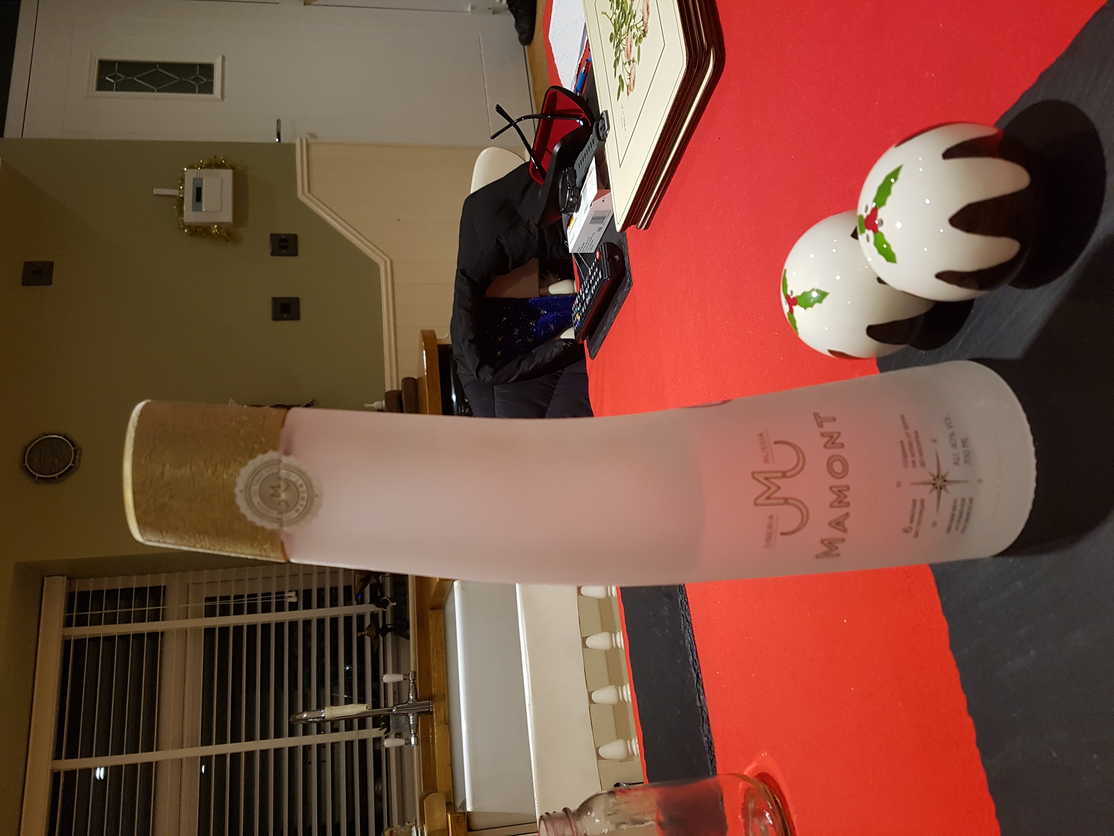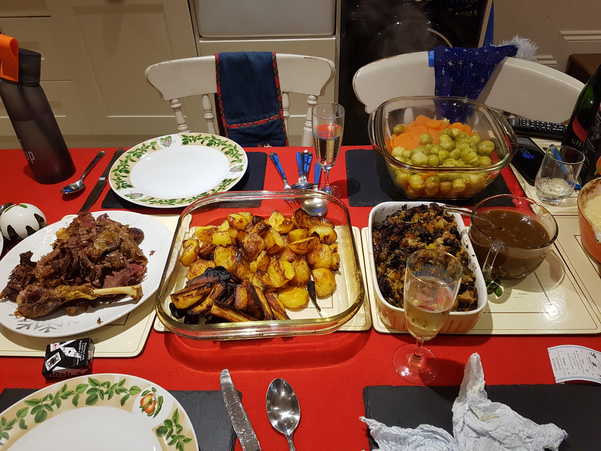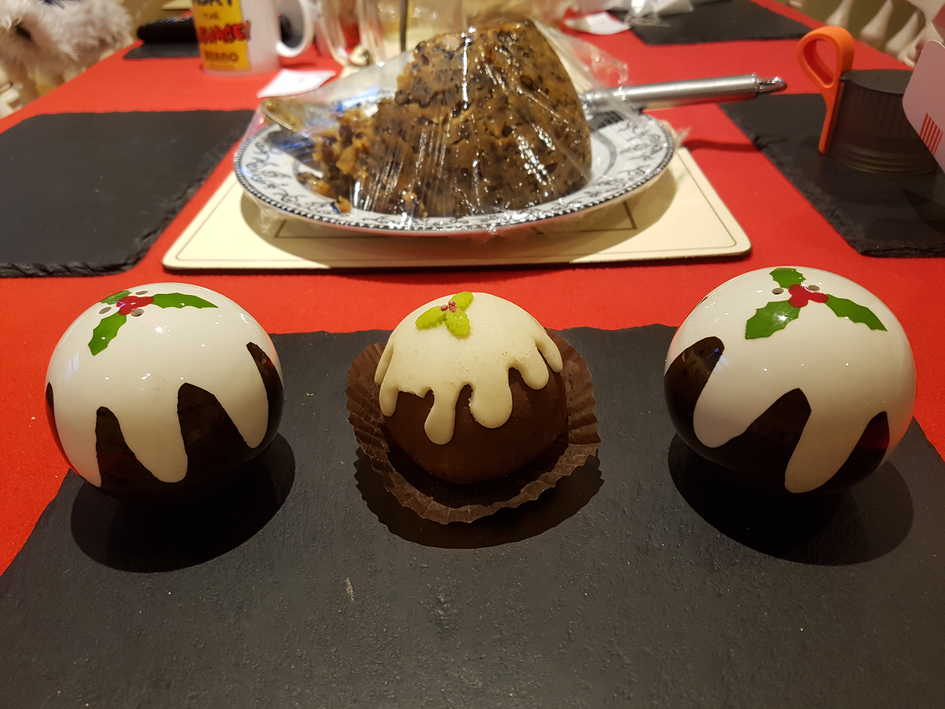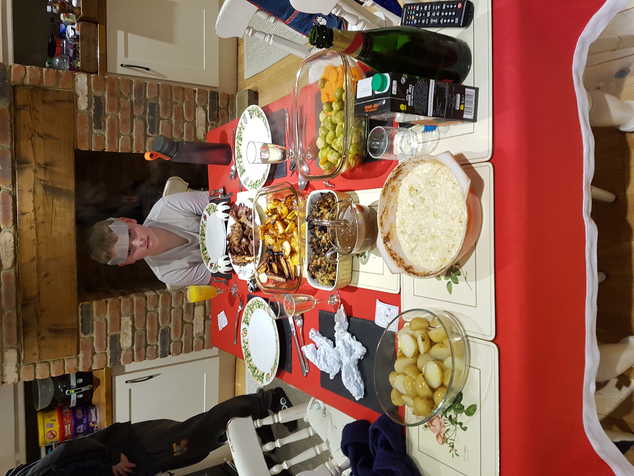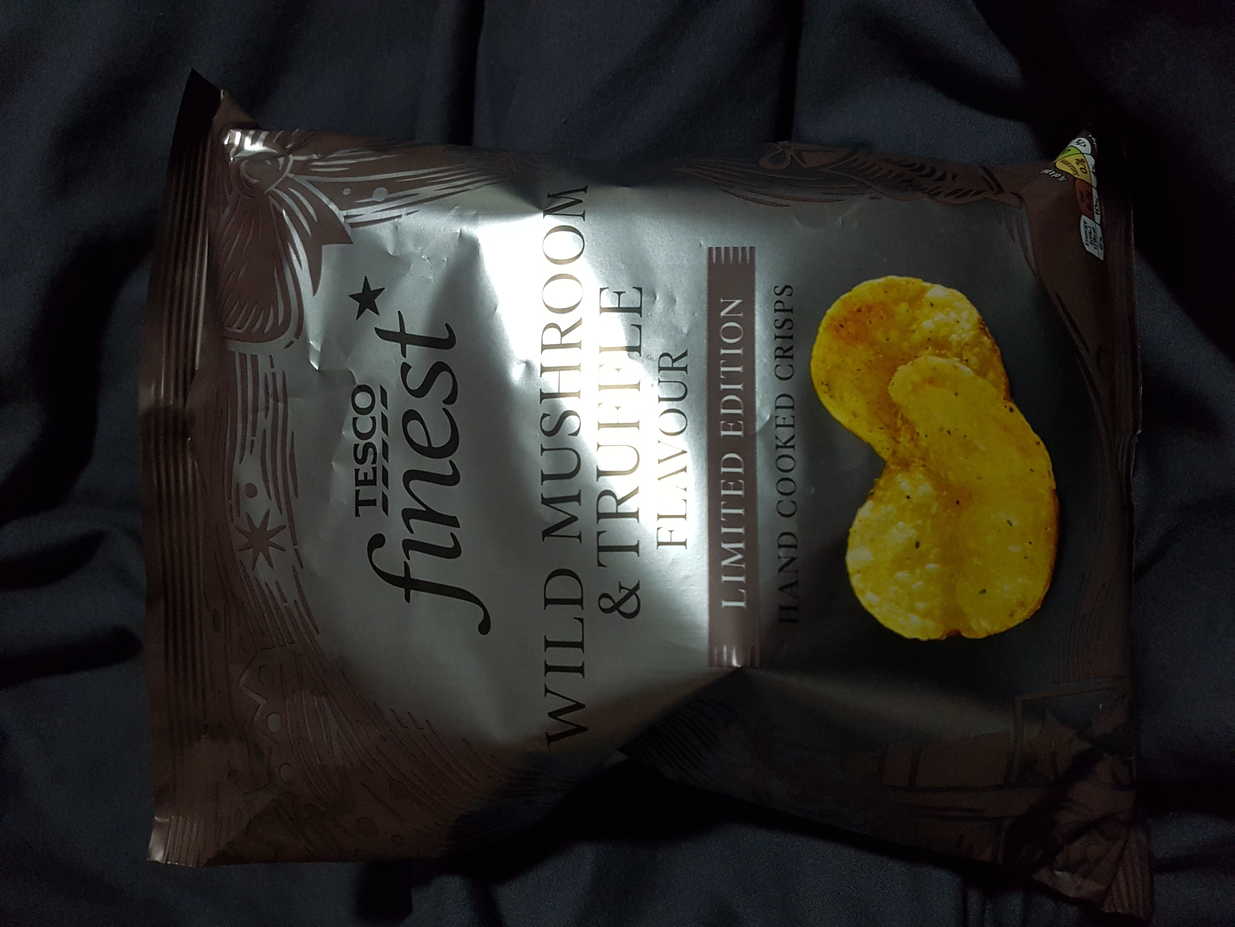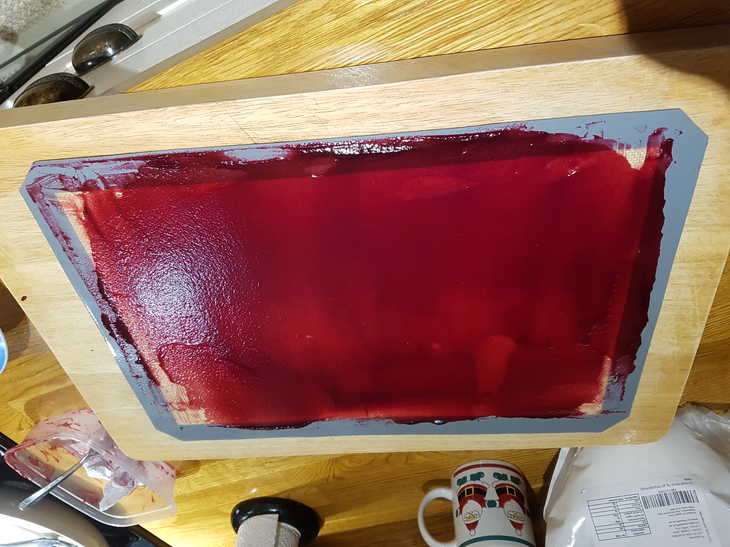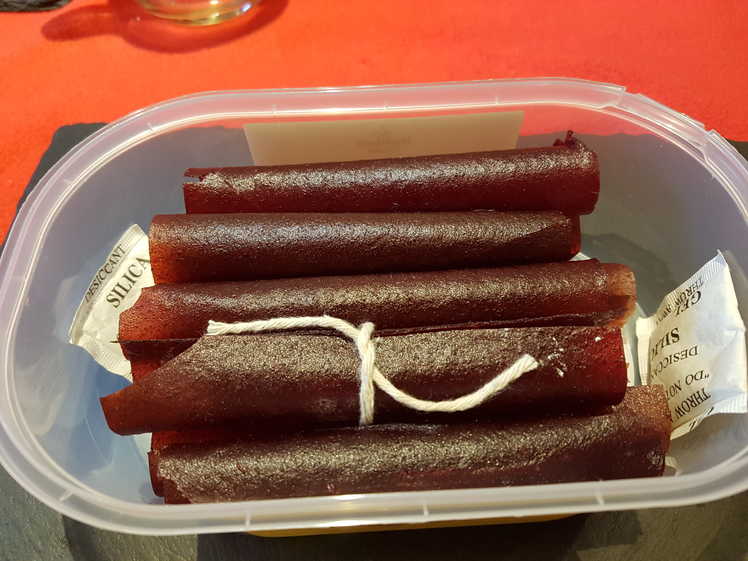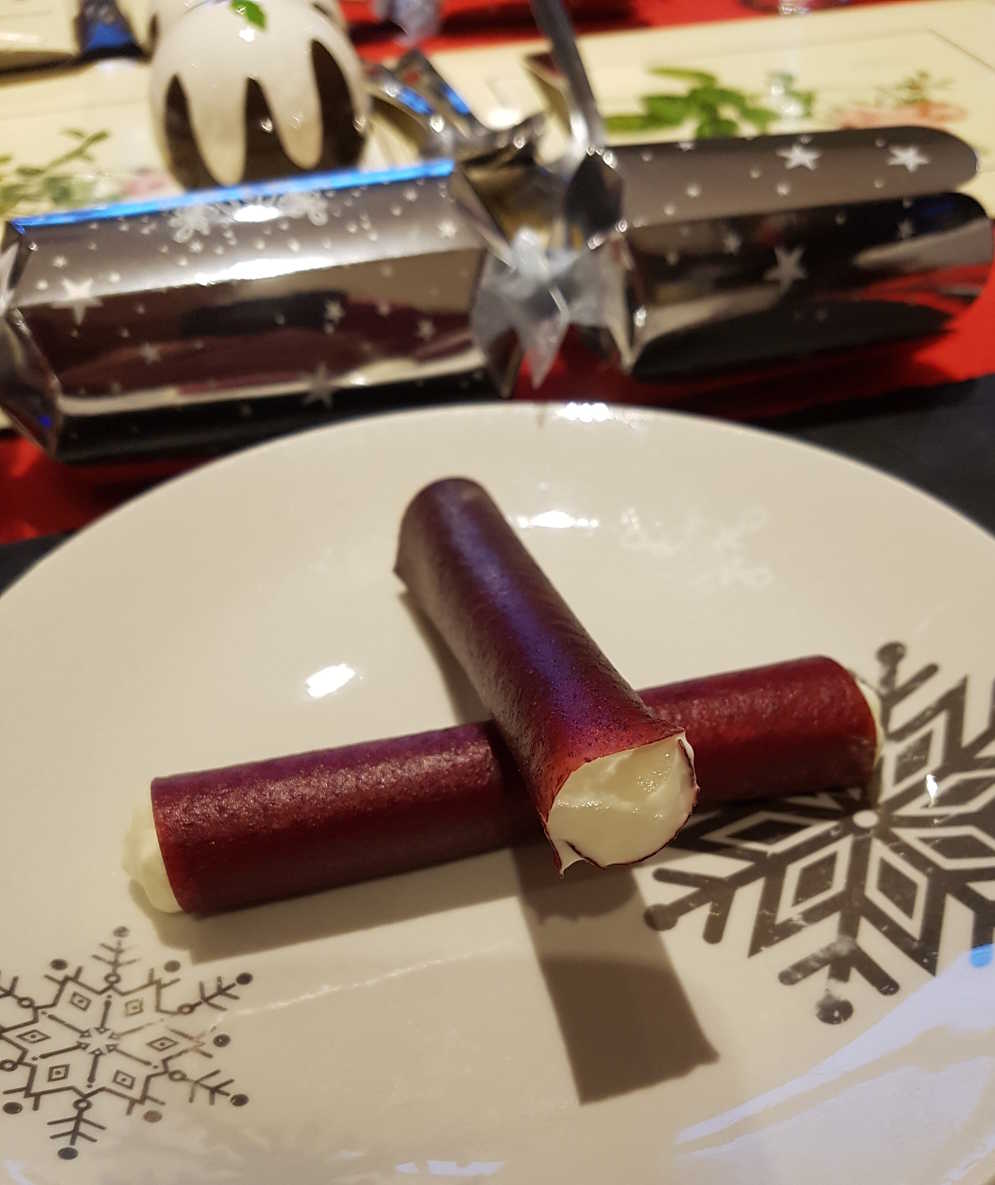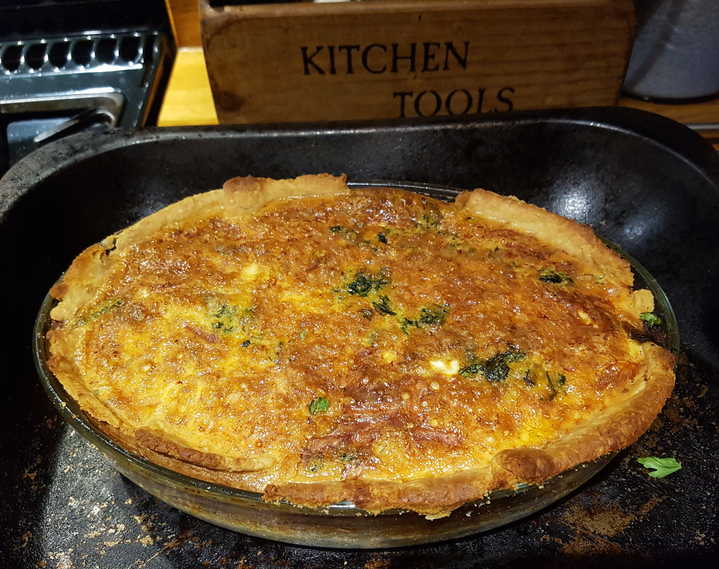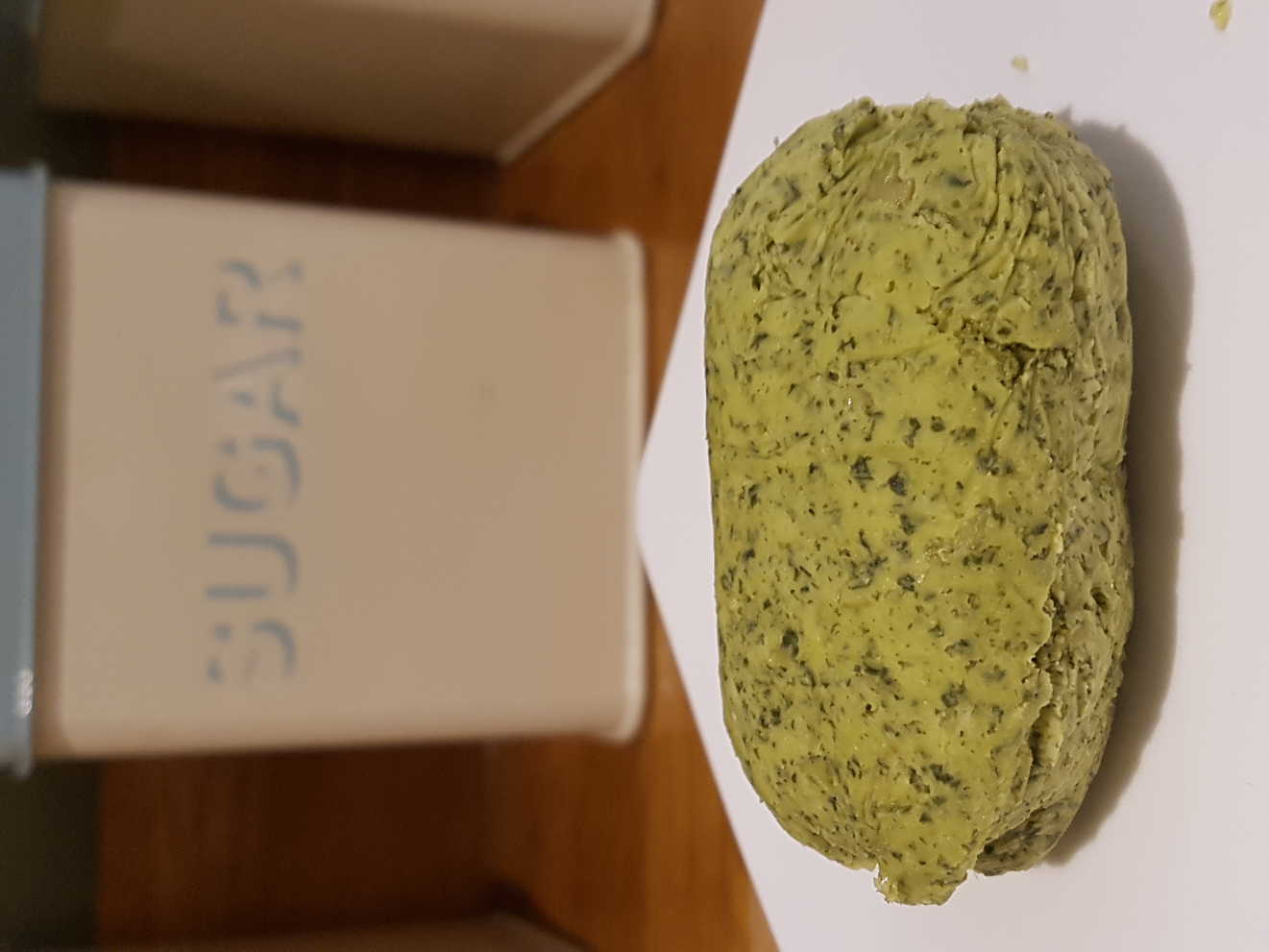
Scone

Ha - fooled you! It's not that kind of scone!
I recently made trips up to Scotland, once to visit the ashes of my Mum, or the river where they were scattered, and once to visit Scone Palace, amongst other things.
Those things included Flora, Cambo Country House, and the Lands of Loyal hotel, where we drank possibly the most revolting red wine I've every tried: an unfiltered, organic Nero D'Avola horror from Sicily.
To be fair, they did warn us it might not be what we expected, if what we had expected was drinkable. It turns out to make an excellent cooking wine though - so nothing wasted, nothing lost.
The hotel is an impressive building, even if their wine cellar leaves something to be desired, featuring a striking sitting room with obligatory open fireplace, a fine bird-cage, and a magnificent Lagonda.
Scone Palace is, of course, the original home of the Scone of Destiny - whose recipe was famously stolen in 1296 by Edward Longshanks and removed to Westminster Abbey from where it was broken up and distributed to all the seaside tearooms of England.
It was also the seat of most, if not all, of Scottish history between Shakespeare's 11th century MacBeth and the crowning of Charles II there in 1651.
After which its story ended.
It is now a venue for meetings of Scottish dog-fanciers. Though it still possesses remarkable gardens, including an historic arboretum, and a delightful maze which will reward your dedication to navigating your way to its centre with a nice statue of a lady and an empty pond. And an emergency exit, so you don't have to Ariadne your way back.
My family, or at least some of us, have been regularly heading up to Eskdalemuir in the Scottish Borders
to celebrate Mum's death. Obviously celebrate isn't the right word, though you wouldn't know it from the photos.
We visit the Buddhist monastery at Samye Ling and the Naga House in the White Esk river where we scattered Mum's ashes.
But our usual camping ground became unavailable over COVID so we've had to find somewhere else. Fortunately there's a lovely place near Hawick called Rue Du Chateau; it's a bit further away but it's a much nicer campsite, since you don't have to share it with caravans and mobile homes.
It has a river and a composting toilet in an old horse box, and if you're lucky you may be visited by the local ducks and chickens. If you're unlucky you'll be visited by the wasps.
As is traditional we dined on camping spag bol for which I had prepared an ersatz Campbell's oxtail soup at great expense.
It tasted almost like the real thing 😢
We visit the Buddhist monastery at Samye Ling and the Naga House in the White Esk river where we scattered Mum's ashes.
But our usual camping ground became unavailable over COVID so we've had to find somewhere else. Fortunately there's a lovely place near Hawick called Rue Du Chateau; it's a bit further away but it's a much nicer campsite, since you don't have to share it with caravans and mobile homes.
It has a river and a composting toilet in an old horse box, and if you're lucky you may be visited by the local ducks and chickens. If you're unlucky you'll be visited by the wasps.
As is traditional we dined on camping spag bol for which I had prepared an ersatz Campbell's oxtail soup at great expense.
It tasted almost like the real thing 😢
Lamb Shanks Braised in Red Wine
main meat
During an otherwise pleasant dinner at a very old-fashioned Scottish holiday lodge Flora and I made the mistake of choosing a particularly horrible
organic, vegan, unfiltered Scicilian Nero D'avola red wine by Fabrizio Vella. It was utterly undrinkable.
Fortunately it makes an excellent braising wine.
Thanks to Nagi for the basic outline, though I enhanced the recipe with a touch of soy and fish sauce, and some extra shallots and mushrooms à la beef bourgignon. Don't worry you won't taste the fish sauce, but maybe you could throw in a few minced anchovies instead?
Fortunately it makes an excellent braising wine.
Thanks to Nagi for the basic outline, though I enhanced the recipe with a touch of soy and fish sauce, and some extra shallots and mushrooms à la beef bourgignon. Don't worry you won't taste the fish sauce, but maybe you could throw in a few minced anchovies instead?
Serves 4
Ingredients
- 4 lamb shanks
- oil for shallow frying
- 3 carrots, finely chopped
- a few bay leaves
- 1 large onion, finely chopped
- large handful of thyme
- 3 sticks celery, finely chopped
- half a dozen cloves garlic, crushed
- 2 tblsps tomato purée
- glass brandy
- 1 bottle red wine
- 1 tablespoon soy sauce
- 1 tablespoon fish sauce
- 1 tin chopped tomatoes
- chicken stock
Extras:- oil
- butter
- a dozen round shallots or pickling onions, peeled
- 200g button mushrooms, cleaned
- 2 cloves garlic, minced
Pre-heat the oven to 180-200°C/360-400°F/Gas Mark 5-6.
Heat a large oven-proof casserole with a generous puddle of oil. Season the shanks with salt & pepper and sear them all, all over. Do it in batches so as not to overload the pan. Set aside.
Over high heat add the chopped carrots and fry until colouring.
Throw in the bay leaves, the chopped onions and the crushed garlic cloves and fry until colouring.
Add the chopped celery and the thyme and fry until softened.
Add the tomato purée and cook until the oil separates. De-glaze the pan with a glass of brandy, then add the red wine and bubble it up. Stir in the tin of tomatoes, the soy and fish sauce.
Then tightly pack the browned shanks back in to the pot along with any of their juices. Add enough stock or water to almost cover everything.
Bring to the boil, cover and put in the oven for 2 hours until the meat is tender.
Now lift out the shanks, pour out the cooking liquid and press it through a sieve. Return everything (except the exhausted pulp which you can keep for sandwiches Reader - do not use it in sandwiches) back into the casserole and put it back in the oven uncovered. Continue cooking and reducing for 30-60 minutes until the meat is almost falling off the bones.
In the meantime heat oil in a frying pan and brown the shallots all over, shaking occasionally, and add them to the casserole. Then add a generous knob of butter and the sliced garlic to the pan, allow the butter to foam and the garlic to begin to colour then add the mushrooms. Fry until they begin to colour, shaking occasionally. Add these and their juices to the casserole.
Heat a large oven-proof casserole with a generous puddle of oil. Season the shanks with salt & pepper and sear them all, all over. Do it in batches so as not to overload the pan. Set aside.
Over high heat add the chopped carrots and fry until colouring.
Throw in the bay leaves, the chopped onions and the crushed garlic cloves and fry until colouring.
Add the chopped celery and the thyme and fry until softened.
Add the tomato purée and cook until the oil separates. De-glaze the pan with a glass of brandy, then add the red wine and bubble it up. Stir in the tin of tomatoes, the soy and fish sauce.
Then tightly pack the browned shanks back in to the pot along with any of their juices. Add enough stock or water to almost cover everything.
Bring to the boil, cover and put in the oven for 2 hours until the meat is tender.
Now lift out the shanks, pour out the cooking liquid and press it through a sieve. Return everything (except the exhausted pulp which you can keep for sandwiches Reader - do not use it in sandwiches) back into the casserole and put it back in the oven uncovered. Continue cooking and reducing for 30-60 minutes until the meat is almost falling off the bones.
In the meantime heat oil in a frying pan and brown the shallots all over, shaking occasionally, and add them to the casserole. Then add a generous knob of butter and the sliced garlic to the pan, allow the butter to foam and the garlic to begin to colour then add the mushrooms. Fry until they begin to colour, shaking occasionally. Add these and their juices to the casserole.
These extras, particularly the onions, will fall apart if you cook them for much over 20 minutes, so only add them when the meat is approaching done.
Serve each shank on bed of mashed potato or cauliflower purée
with a selection of the shallots and mushrooms and a drizzle of the reduced sauce.
Absolutely gorgeous.
I served mine with the cauliflower purée and peas with minted butter - a great combination of flavours.
If, like mine, your cooking liquid hasn't thickened sufficiently then boil it hard after you've removed the meat and vegetables for serving until it turns syrupy and coats the back of a spoon.
I served mine with the cauliflower purée and peas with minted butter - a great combination of flavours.
If, like mine, your cooking liquid hasn't thickened sufficiently then boil it hard after you've removed the meat and vegetables for serving until it turns syrupy and coats the back of a spoon.
Minted Butter
ingredient
Ingredients- mint leaves, minced
- squeeze of lemon or lime juice
- lemon or lime zest
- 1 garlic clove, crushed
- salt & pepper
- softened butter
Mince the mint leaves then grind them in a pestle and mortar with a grating of sea salt and coarse pepper.
Add crushed garlic, a squeeze of lemon or lime and some of the zest and churn to a paste.
Blend with melted butter, roll up in clingfilm or baking paper and chill.
Add crushed garlic, a squeeze of lemon or lime and some of the zest and churn to a paste.
Blend with melted butter, roll up in clingfilm or baking paper and chill.
Really good.
Adjust the proportions as you like, I wanted mine a vivid green with a strong mint flavour, so I used plenty of mint. If you're making enough I guess you could use a food processor. Maybe.
Adjust the proportions as you like, I wanted mine a vivid green with a strong mint flavour, so I used plenty of mint. If you're making enough I guess you could use a food processor. Maybe.
Cauliflower Purée with Parmesan
side veg cheese
I took Nagi's mashed cauliflower, replaced the parmesan with pecorino romano and multiplied the quantity by 10.
It seemed to like it.
I also threw a bunch of dill into the water to cook with the cauliflower florets for extra flavour, then just discarded it before draining and blending.
You could cook garlic cloves with the cauliflower and blend them in too as Nagi does.
I also threw a bunch of dill into the water to cook with the cauliflower florets for extra flavour, then just discarded it before draining and blending.
You could cook garlic cloves with the cauliflower and blend them in too as Nagi does.
Serves 4
Ingredients
- 1 cauliflower
- 200g parmesan or similar hard cheese
- cream, sour cream or milk
To Serve:- parsley or dill, chopped
- butter herbed or minted, melted
Break or chop the cauliflower into similar-sized florets.
Cook until completely soft in boiling salted water.
Drain, then blend until smooth with just enough of the cooking water, cream, crème fraîche, or milk.
Beat in the grated cheese.
Season to taste and serve with melted herb butter, chopped parsley or dill.
Season to taste and serve with melted herb butter, chopped parsley or dill.
Excellent.
Warmed Burrata Salad with Roast Tomatoes and Grilled Nectarine
salad cheese
The recipe from which I stole this idea used apricots,
but I had nectarines - so there.
I'm sure any stone fruit would do it justice.
Ingredients
- rocket
- cherry tomatoes
- burrata cheese
- apricot, peaches, nectarines or green plums
- red or spring onion, or shallots, sliced
- garlic, minced
- sliced ham
- olive oil
- salt & pepper
Dressings:- parsley, thyme, or basil
- balsamic vinegar
- chilli
- vinaigrette
Pre-heat the oven to 200°C/400°F/Gas Mark 6.
Heat a grill or griddle pan.
Mix cherry tomatoes with olive oil, minced garlic and thinly sliced red onion, spring onions or shallots. Season with a little salt and pepper and some thyme leaves if you like.
Lay in a layer in a small ovenproof dish, and bake for 10-15 minutes until the tomatoes begin to split. Place the burrata on top and return to the oven for another 2-3 minutes until the cheese begins to soften, but don't let it collapse.
Meanwhile, halve the apricot, peach, nectarine, or plum, remove the stone, season the cut with salt and a generous amount of pepper, drizzle with olive oil and grill the cut-side or fry it in a roasting hot griddle pan until the griddle lines are nicely charred into the fruit.
Add a slice of ham and griddle that too. Slice up the ham across the griddle lines.
Dress the tomatoes with balsamic vinegar and serve everything up on a bed of rocket, topped with the warm burrata.
Scatter with herbs of choice and preferred salad dressing.
Heat a grill or griddle pan.
Mix cherry tomatoes with olive oil, minced garlic and thinly sliced red onion, spring onions or shallots. Season with a little salt and pepper and some thyme leaves if you like.
Lay in a layer in a small ovenproof dish, and bake for 10-15 minutes until the tomatoes begin to split. Place the burrata on top and return to the oven for another 2-3 minutes until the cheese begins to soften, but don't let it collapse.
You can also warm your burrata by resting it in hot water, but you do risk it splitting and diluting itself if it's a cheap knockoff,
so you might be advised to loosely wrap it in clingfilm first.
Meanwhile, halve the apricot, peach, nectarine, or plum, remove the stone, season the cut with salt and a generous amount of pepper, drizzle with olive oil and grill the cut-side or fry it in a roasting hot griddle pan until the griddle lines are nicely charred into the fruit.
Add a slice of ham and griddle that too. Slice up the ham across the griddle lines.
Dress the tomatoes with balsamic vinegar and serve everything up on a bed of rocket, topped with the warm burrata.
Scatter with herbs of choice and preferred salad dressing.
You can flavour with parsley, thyme, basil, sliced chilli, or coriander.
Dress with olive oil, lime or lemon juice, a vinaigrette, or just the tomatoes' juices.
I used some coconut-lime dressing and a sliced chilli, it was delicious.
You could mix frisée or thinly sliced radicchio in with the rocket.
I used some coconut-lime dressing and a sliced chilli, it was delicious.
You could mix frisée or thinly sliced radicchio in with the rocket.
Langoustine and Black Pudding Crumble
fish meat main
Whilst on a recent holiday in Edinburgh, Flora treated me to a haunch of McLeod's Stornaway black pudding.
But we couldn't eat it all, so she generously donated the leftovers for my return to Bradford,
whereupon I thought I'd match it up with another Scottish staple - langoustines.
Well, I couldn't find any langoustines - there's a rumour Sainsbury sells them, but not in the poxy Sainsbury near me, apparently. So I used a bag of frozen king prawns instead.
I took some advice on the subject of making shellfish stock and roasted the prawn heads and shells before frying them to make the sauce. I also added paprika and deglazed with brandy before adding the white wine.
It's not the season for wild garlic, so I threw a couple of minced garlic cloves in with the bread, as well as a very generous handful of parsley leaves and all the fennel fronds that came with the bulb so it blends up good and green.
I felt the sauce was a little thin, so I sliced half the fennel bulb and cooked it in the sauce for a few minutes before adding the beans. If you wanted to bulk it further you might add some cubes of cooked potato.
Well, I couldn't find any langoustines - there's a rumour Sainsbury sells them, but not in the poxy Sainsbury near me, apparently. So I used a bag of frozen king prawns instead.
I took some advice on the subject of making shellfish stock and roasted the prawn heads and shells before frying them to make the sauce. I also added paprika and deglazed with brandy before adding the white wine.
It's not the season for wild garlic, so I threw a couple of minced garlic cloves in with the bread, as well as a very generous handful of parsley leaves and all the fennel fronds that came with the bulb so it blends up good and green.
I felt the sauce was a little thin, so I sliced half the fennel bulb and cooked it in the sauce for a few minutes before adding the beans. If you wanted to bulk it further you might add some cubes of cooked potato.
Serves 4
Ingredients
- 16 langoustines, cooked (or about 400g prawns)
- 1 onion, peeled, chopped
- 1 leek, chopped
- 1 fennel bulb, chopped
- couple garlic cloves, crushed
- 1 star anise
- 1 tablespoon smoked paprika optional
- 200ml of white wine
- 200ml of double cream
- 200-250g of white beans, cooked
- vegetable oil
- 150g of black pudding
For the Wild Garlic Crust:- 10 wild garlic leaves or a few garlic cloves
- 150g of white breadcrumbs
- 60g of butter, melted
- parsley
- salt
Remove the tail meat from the langoustine and set aside, reserving the shells to make a stock for the sauce.
Pour in enough water to just cover. Simmer for 1 hour then strain through a sieve into another saucepan. Place back on the heat and reduce down to 200ml, then add the cream and reduce to a sauce consistency. Keep the sauce warm.
Cut the black pudding into 2cm pieces and deep-fry at 180°C until just crispy. Remove and drain on kitchen paper.
For the wild garlic crust, add the breadcrumbs, a few or many! parsley leaves and 6 leaves of wild garlic or a couple of garlic cloves to a blender and blitz until green in colour. Add any fronds from the fennel bulb. Place in a bowl, mix through the melted butter and season with a little salt and pepper.
Warm the sauce over a gentle heat, I sliced half my fennel bulb and added it to the sauce to cook. add the white beans and cook until the beans have warmed through. Add the crispy black pudding and the langoustine meat.
To finish the sauce, add a little chopped wild garlic and reheat for 2 minutes. Spoon the mixture into a shallow serving dish or 4 individual dishes or ramekins.
Sprinkle the wild garlic crumbs over the top and place under a hot grill to colour and crisp up the crumb. Serve immediately.
My prawns were frozen uncooked, so after defrosting then shelling them I blanched the bodies in salted water for about 2 minutes, then cooled them quickly in iced water.
You'll need to remove the intestinal tract, and cut them in half or sections cross-ways - about the same size as the black pudding.
Lubricate the shells and heads with a little oil, then roast for 20-30 minutes at Gas Mark 4 until they colour deep red and slightly caramalise.
Heat oil and butter in a large pan and fry the roast shells until nicely coated, then add the onion, leek and fennel.
Add the garlic, star anise and paprika if using. Fry a little more, then deglaze with brandy if you like then white wine.You'll need to remove the intestinal tract, and cut them in half or sections cross-ways - about the same size as the black pudding.
Pour in enough water to just cover. Simmer for 1 hour then strain through a sieve into another saucepan. Place back on the heat and reduce down to 200ml, then add the cream and reduce to a sauce consistency. Keep the sauce warm.
Cut the black pudding into 2cm pieces and deep-fry at 180°C until just crispy. Remove and drain on kitchen paper.
For the wild garlic crust, add the breadcrumbs, a few or many! parsley leaves and 6 leaves of wild garlic or a couple of garlic cloves to a blender and blitz until green in colour. Add any fronds from the fennel bulb. Place in a bowl, mix through the melted butter and season with a little salt and pepper.
Warm the sauce over a gentle heat, I sliced half my fennel bulb and added it to the sauce to cook. add the white beans and cook until the beans have warmed through. Add the crispy black pudding and the langoustine meat.
To finish the sauce, add a little chopped wild garlic and reheat for 2 minutes. Spoon the mixture into a shallow serving dish or 4 individual dishes or ramekins.
Sprinkle the wild garlic crumbs over the top and place under a hot grill to colour and crisp up the crumb. Serve immediately.
Really good, if a bit on the sloppy side.
I served mine with a lettuce and tomato salad dressed with olive oil and balsamic vinegar.
I served mine with a lettuce and tomato salad dressed with olive oil and balsamic vinegar.
Accidental Liver, Deep Fried
main meat
On my weekly meat-walk into Brighouse I developed a craving for devilled kidneys, so kidney is what I tried to order when I finally arrived at the butcher's.
Unfortunately, the word which came out of my mouth was liver.
After the butcher spent ten minutes rummaging through the bottom of his fridges (I always seem to arrive just before he closes up)
for the last bag of calf livers I didn't have the heart to tell him.
So I went home with accidental liver.
I bought a couple of cheeses from Brighouse's wine-and-cheese shop to try some possible liver pairings, and hunted around for novelty cooking ideas: It seems American southerners will deep-fry their chicken livers (they'll deep-fry anything), and Azerbaijanis like flouring and deep-frying beef liver. So I thought I'd try that out.
I can report that deep-fried liver is pretty good - crispy on the outside and oozing bloody succulence in the centre. Served with a blue cheese dressing on an onion-heavy salad makes for a great match.
Yum!
Shallow-fried with feta and sweetcorn is less good. Especially if you overcook the liver 🙁
Too late to trial, I also came across an intriguing suggestion for poaching liver in a mixture of butter and Vermouth. As a particularly disappointing movie sequel puts it: A good question, for another time...
So I went home with accidental liver.
I bought a couple of cheeses from Brighouse's wine-and-cheese shop to try some possible liver pairings, and hunted around for novelty cooking ideas: It seems American southerners will deep-fry their chicken livers (they'll deep-fry anything), and Azerbaijanis like flouring and deep-frying beef liver. So I thought I'd try that out.
I can report that deep-fried liver is pretty good - crispy on the outside and oozing bloody succulence in the centre. Served with a blue cheese dressing on an onion-heavy salad makes for a great match.
Yum!
Shallow-fried with feta and sweetcorn is less good. Especially if you overcook the liver 🙁
Too late to trial, I also came across an intriguing suggestion for poaching liver in a mixture of butter and Vermouth. As a particularly disappointing movie sequel puts it: A good question, for another time...
Ingredients
- liver
- milk or buttermilk
- flour
- salt & pepper
- oil for deep-frying
Trim the livers of membranes, gristle, connective tissue or excess fat.
Cut into equal-sized pieces (if they're large); use the natural lobe-lines as guides.
Put in a bowl, cover with milk and leave for an hour.
Preheat a deep pan of oil to 350°F/175°C.
Drain the liver and roll the pieces in the flour. Drop them into the oil and fry for 2-3 minutes until golden.
Put in a bowl, cover with milk and leave for an hour.
Opinions vary about the utility of this milky bathing - allegedly it can remove any excess bitterness, impurities, and blood from the liver.
I don't normally find liver particularly bitter, but I did the soaking in this case anyway 'cos the liver was pretty old and I wanted to give it all the help I could.
Buttermilk might be a better choice since it's greater acidity should also help tenderize the meat.
Feel free to add hot sauce or other flavourings to your milk.
Sieve some flour into a shallow bowl and season it generously. Again you could add flavourings like cayenne or paprika.Buttermilk might be a better choice since it's greater acidity should also help tenderize the meat.
Feel free to add hot sauce or other flavourings to your milk.
Preheat a deep pan of oil to 350°F/175°C.
Drain the liver and roll the pieces in the flour. Drop them into the oil and fry for 2-3 minutes until golden.
If you want an even crispier Southern coating (and why wouldn't you?) then prepare two extra bowls with beaten egg and panko breadcrumbs.
Roll the livers first in flour, then egg, then breadcrumbs, then fry them.
Scoop out the liver and drain on kitchen paper.
Quite good. For liver 😉
Serve with hot (as in spice) sauce, a blue cheese dressing (add minced spring onions) or a hot (as in temperature) blue cheese sauce.
Serve with hot (as in spice) sauce, a blue cheese dressing (add minced spring onions) or a hot (as in temperature) blue cheese sauce.
Thai-Red of Curry Paste

I bought some Thai red curry paste before last Christmas for my annual Tom Khaa Kai, because I read it would help. It does!.
It's a whole thing I have going on; to do with needing to eat a chicken so I can use its bones to make stock for the gravy for the Christmas goose. Long story.
Anyway the only decent prepared pots of this stuff are really big, so now I have toooo much Thai red curry paste! I'm getting tired of it. Thai-red of it. Geddit?
Oh please yourselves...
Fried Thai Red Curry Salmon
thai fish main
I thought I'd try coating some salmon with Thai red curry paste, of which I currently have excess, for frying.
You'll need to thin the paste enough that it will smear over the fish. I used fish sauce, rice vinegar, and toyomansi sauce as thinners but I thought that the thick cream from coconut milk might be ideal.
I'm sure you could also use mirin, citrus juice or most salad vinaigrettes. Even water!
You'll need to thin the paste enough that it will smear over the fish. I used fish sauce, rice vinegar, and toyomansi sauce as thinners but I thought that the thick cream from coconut milk might be ideal.
I'm sure you could also use mirin, citrus juice or most salad vinaigrettes. Even water!
Serves 2
Ingredients
- a side of salmon
- 1-2 tblsp Thai red curry paste
- 1-2 tsps fish sauce
- 1-2 tsps toyomansi sauce
- 1-2 tsps rice vinegar
- plain flour
To Serve:- more toyomansi sauce
De-scale the salmon if necessary.
Mix the curry paste with the liquids until you have a smearable consistency. It will probably remain coarse, but you need to be able to scrape it thinly over the surface of the fish.
Cut the salmon into fat steaks. Pat them dry, then roll them in flour and shake off excess.
Smear the loosened paste thinly on all sides.
Check the centre of the salmon has reached 45-50°C then remove and allow to relax for 5-10 minutes before serving.
You can use this time to pan-fry some side vegetables in the flavoured oil if you like. Blanched, halved tenderstem broccoli stalks charred cut-side down in the same pan worked well for me.
Mix the curry paste with the liquids until you have a smearable consistency. It will probably remain coarse, but you need to be able to scrape it thinly over the surface of the fish.
Cut the salmon into fat steaks. Pat them dry, then roll them in flour and shake off excess.
Smear the loosened paste thinly on all sides.
If the sauce is thin enough you can squidge it over the fish pieces in a freezer bag to coat them evenly.
Heat a frying pan with a fairly generous puddle of neutral oil until smoking hot.
Fry the salmon pieces skin-side down over high heat until singed and crisping nicely, then turn and brown on all sides.Check the centre of the salmon has reached 45-50°C then remove and allow to relax for 5-10 minutes before serving.
You can use this time to pan-fry some side vegetables in the flavoured oil if you like. Blanched, halved tenderstem broccoli stalks charred cut-side down in the same pan worked well for me.
Excellent, but can be super-spicy. You probably want only a thin, transparent coating on your fish.
If you can see a visible thickness of paste you probably have too much.
Give the fish and veg a drizzle of toyomansi sauce to serve if you like. I imagine a coconut-based sauce or dressing would also go well.
Having used a much thinner curry paste I have to say you can make the coating milder,
but it does then lose a great deal of its distinctive flavours.
So I guess you get to choose - but choose larding on the heat 😉
So I guess you get to choose - but choose larding on the heat 😉
Give the fish and veg a drizzle of toyomansi sauce to serve if you like. I imagine a coconut-based sauce or dressing would also go well.
Thai Red Curry Marinated Steak
thai main meat
More Thai red curry paste used up.
At this rate I won't have any left for my Christmas Tom Khaa Kai and I'll have to buy another huge pot and start the cycle all over again!
Coconut cream is just thick coconut milk, which you can buy separately, or scrape off the rich thick crust which floats to the top of settled coconut milk.
At this rate I won't have any left for my Christmas Tom Khaa Kai and I'll have to buy another huge pot and start the cycle all over again!
Coconut cream is just thick coconut milk, which you can buy separately, or scrape off the rich thick crust which floats to the top of settled coconut milk.
Serves 2
Ingredients
- 24 oz sirloin steak
- 2-3 tablespoons Thai red curry paste
- 2 tablespoons coconut cream
- 1-2 teaspoons fish sauce
For a Sauce:- spring onions, sliced on a bias
- cream or coconut cream
- peanut dressing
Mix the curry paste and the coconut cream and cook it gently in a small pot until it starts to bubble and the aromas are released.
Stir through the fish sauce and leave to cool.
Cut the steak widthways into two fat pieces, put them in a freezer bag, smear them with the paste and squidge everything together.
Leave to marinate for 24 hours.
Put a large frying pan over a high heat, add a drizzle of neutral oil and when it's smoking hot put in the sirloin fat-side down. Allow to crisp for a couple of minute and then fry each side so they caramelize and blacken slightly.
Remove fat-side up to a low oven until the centre of the steaks reach your preferred temperature (50°C for rare), then allow the meat to rest tented in foil for ten minutes.
Meanwhile rinse out the freezer bag with hot water and use it to deglaze the pan. Bubble off to reduce, add a couple of tablespoons of peanut dressing if you like then pour in a little cream or coconut cream and bubble until it thickens to coat the back of a spoon.
Slice the steak, scatter with sliced spring onions and serve with the sauce.
Stir through the fish sauce and leave to cool.
Cut the steak widthways into two fat pieces, put them in a freezer bag, smear them with the paste and squidge everything together.
Leave to marinate for 24 hours.
Put a large frying pan over a high heat, add a drizzle of neutral oil and when it's smoking hot put in the sirloin fat-side down. Allow to crisp for a couple of minute and then fry each side so they caramelize and blacken slightly.
Remove fat-side up to a low oven until the centre of the steaks reach your preferred temperature (50°C for rare), then allow the meat to rest tented in foil for ten minutes.
Meanwhile rinse out the freezer bag with hot water and use it to deglaze the pan. Bubble off to reduce, add a couple of tablespoons of peanut dressing if you like then pour in a little cream or coconut cream and bubble until it thickens to coat the back of a spoon.
Slice the steak, scatter with sliced spring onions and serve with the sauce.
Ooh good!
Thai Salad
thai salad veg vegan
Is it a lettuce? Is it a cabbage? Yes: it's Chinese leaf!
Store the chopped lettuce separate from the juicy fruit if you're keeping them for any length of time to retain the lettuce's crispness.
There's a common Thai salad made with hard green papaya, but I couldn't find any of those. Or any ripe papayas for that matter, despite finding mangosteens and rambutans. So this is what I used.
Store the chopped lettuce separate from the juicy fruit if you're keeping them for any length of time to retain the lettuce's crispness.
There's a common Thai salad made with hard green papaya, but I couldn't find any of those. Or any ripe papayas for that matter, despite finding mangosteens and rambutans. So this is what I used.
Ingredients
- napa cabbage/Chinese leaf lettuce
- a few mangosteen
- a dozen rambutan, or lychee
- a few spring onions, sliced
- red chilli
- 10 cherry tomatoes
- 1 papaya or mango
- 2-3" cucumber
- a few lemon grass stalks
- generous bunch of coriander
Put out a bowl for the fruit.
Split and peel the rambutan skins. Cut the white inner flesh away from the central seed, and add the flesh to the bowl.
Split and tear away the mangosteen skins and inner purple sponge. Break apart the fleshy white segments and add them to the bowl.
Slice the spring onions on a bias. Include the white and green parts - stop before the leaves become gritty. Add to the bowl.
De-seed a red chilli or two, slice thinly and add to the bowl.
Halve or quarter cherry tomatoes and add.
If you're lucky enough to find a proper green papaya, peel it, and holding in one hand make long vertical cuts in the upper surface, then slice thinly horizontally, or use a peeler to create thin strips.
If it's a ripe papaya then halve, scoop out the seeds from the middle with a spoon, peel and cube the flesh.
If you're using a mango - run a large knife down either side of the mango stone. Cut the flesh in each (almost) half into squares down to the skin. Press flat and cut along the skin to release the cubes.
Add the flesh to your bowl.
Take a length of cucumber, wipe the skin, and quarter it vertically. Cut away the watery seeds from the middle, then thinly slice the outer part with the skin on. You can use a potato peeler for this. Add the strips to the bowl.
Cut away the (probably) dirty tip of the lemon grass root. Remove thick, hard and coarse leaves to reveal the pithy interior. Slice this thinly from the root end until you reach more leafy covering. Remove more tough leaves and continue to thinly slice the pith. Keep going until you run out of soft(ish) centre. You'll probably end up with a disappointingly small amount of edible stalk 🙁 (though you can crush the woody parts to flavour a neutral oil or a salad dressing).
Add to the bowl.
Roughly chop coriander leaves and mix with the fruit.
Starting from the top, slice the napa cabbage and break the slices apart. Dress or mix the lettuce with the fruit to serve.
Split and peel the rambutan skins. Cut the white inner flesh away from the central seed, and add the flesh to the bowl.
Split and tear away the mangosteen skins and inner purple sponge. Break apart the fleshy white segments and add them to the bowl.
Slice the spring onions on a bias. Include the white and green parts - stop before the leaves become gritty. Add to the bowl.
De-seed a red chilli or two, slice thinly and add to the bowl.
Halve or quarter cherry tomatoes and add.
If you're lucky enough to find a proper green papaya, peel it, and holding in one hand make long vertical cuts in the upper surface, then slice thinly horizontally, or use a peeler to create thin strips.
If it's a ripe papaya then halve, scoop out the seeds from the middle with a spoon, peel and cube the flesh.
If you're using a mango - run a large knife down either side of the mango stone. Cut the flesh in each (almost) half into squares down to the skin. Press flat and cut along the skin to release the cubes.
Add the flesh to your bowl.
Take a length of cucumber, wipe the skin, and quarter it vertically. Cut away the watery seeds from the middle, then thinly slice the outer part with the skin on. You can use a potato peeler for this. Add the strips to the bowl.
Cut away the (probably) dirty tip of the lemon grass root. Remove thick, hard and coarse leaves to reveal the pithy interior. Slice this thinly from the root end until you reach more leafy covering. Remove more tough leaves and continue to thinly slice the pith. Keep going until you run out of soft(ish) centre. You'll probably end up with a disappointingly small amount of edible stalk 🙁 (though you can crush the woody parts to flavour a neutral oil or a salad dressing).
Add to the bowl.
Roughly chop coriander leaves and mix with the fruit.
Starting from the top, slice the napa cabbage and break the slices apart. Dress or mix the lettuce with the fruit to serve.
Good with coconut-lime or Thai peanut dressing. Or toyomansi.
Though really you'll want something with fish sauce.
Maybe just mash up palm sugar, lime juice, fish sauce, soy sauce and chillies?
Maybe just mash up palm sugar, lime juice, fish sauce, soy sauce and chillies?
Coconut-Lime Dressing
salad dressing
I used coconut cream, which produced a richer dressing.
Leave out the coriander and the chilli if you like.
Ingredients
- 4 tablespoons coconut milk or cream
- 2 tablespoons fresh lime juice
- 3 teaspoons fish sauce
- 1 tablespoon finely chopped spring onion
- 1 tablespoon palm sugar
- 2 tablespoons coriander leaves
- 1 green chilli, minced
- 3 tablespoons vegetable oil
Blend everything together except the oil until smooth. Adjust the flavour balance to your preference.
Beat in a neutral oil (avocado/grapeseed/sunflower etc.) until you have a dressing consistency.
Beat in a neutral oil (avocado/grapeseed/sunflower etc.) until you have a dressing consistency.
Not bad. I used a rather strongly flavoured oil which slightly spoiled mine, but the concept is good.
Thai Peanut Dressing
salad dressing
I loosely followed Culinary Hill in creating this fairly generic Indonesian satay or Thai peanut sauce.
Though I say so myself!
You can mix up any or all of the ingredients below in whatever proportions you prefer, though I guess the peanut butter, rice vinegar, and the soy sauce are pretty standard.
I might also have been inclined to add red curry paste for heat and complexity, and tamarind for sourness.
I used crunchy peanut butter, didn't have any ginger and blended the lime's zest and a red chilli up with everything else.
It was pretty fabulous!
Though I say so myself!
You can mix up any or all of the ingredients below in whatever proportions you prefer, though I guess the peanut butter, rice vinegar, and the soy sauce are pretty standard.
I might also have been inclined to add red curry paste for heat and complexity, and tamarind for sourness.
I used crunchy peanut butter, didn't have any ginger and blended the lime's zest and a red chilli up with everything else.
It was pretty fabulous!
Ingredients
- ½ cup smooth or not peanut butter
- 2 tablespoons coconut cream
- 2 tablespoons rice vinegar
- 2 tablespoons soy sauce
- 2 tablespoons palm sugar
- 2 tablespoons lime juice (from 1 lime)
- zest of 1 lime
- 1 teaspoon sesame oil
- 2 cloves garlic minced
- 1 tablespoon spring onion, chopped
- 1 tablespoon fish sauce
Optional Extras:- 1 tablespoon fresh ginger minced if you have any
- tamarind paste
- Thai red curry paste
To Season:- Salt and freshly ground black pepper
- 1 red chilli, finely chopped or ¼ tsp red chili flakes
You can grind your own peanut butter from roasted de-skinned peanuts if you like. Otherwise use something from a jar.
Whisk everything together, or if you've got some big lumps or just prefer a smoother result, blend it all up.
Adjust the balance, add salt, pepper or chilli flakes if you think it needs it (mine didn't).
Add a teaspoon or so of water if it's too thick.
Whisk everything together, or if you've got some big lumps or just prefer a smoother result, blend it all up.
Adjust the balance, add salt, pepper or chilli flakes if you think it needs it (mine didn't).
Add a teaspoon or so of water if it's too thick.
Excellent!
2000!

Two thousand recipes!
Why, it seems like only last decade when all I had on this site were a measly thousand recipes. How time flies! I got a bit of a leg up at the beginning by copying out all my old recipe notebooks, and a lot of annotated recipes from my cookbooks, but things really slowed down when I had to start inventing them myself. Though truth be told, only about 500 of the recipes are actually mine.
Anyhoo, here are a few of the recipes I knocked up this week.
Since I bought a tub of Thai red curry paste before Christmas to spice up my annual Tom Kha Kai, and since that only took about a tablespoon, I've had a lot of Thai red curry paste to use up. Can you tell? Good thing it lasts a looong time.
Or is it?
Gouty Day
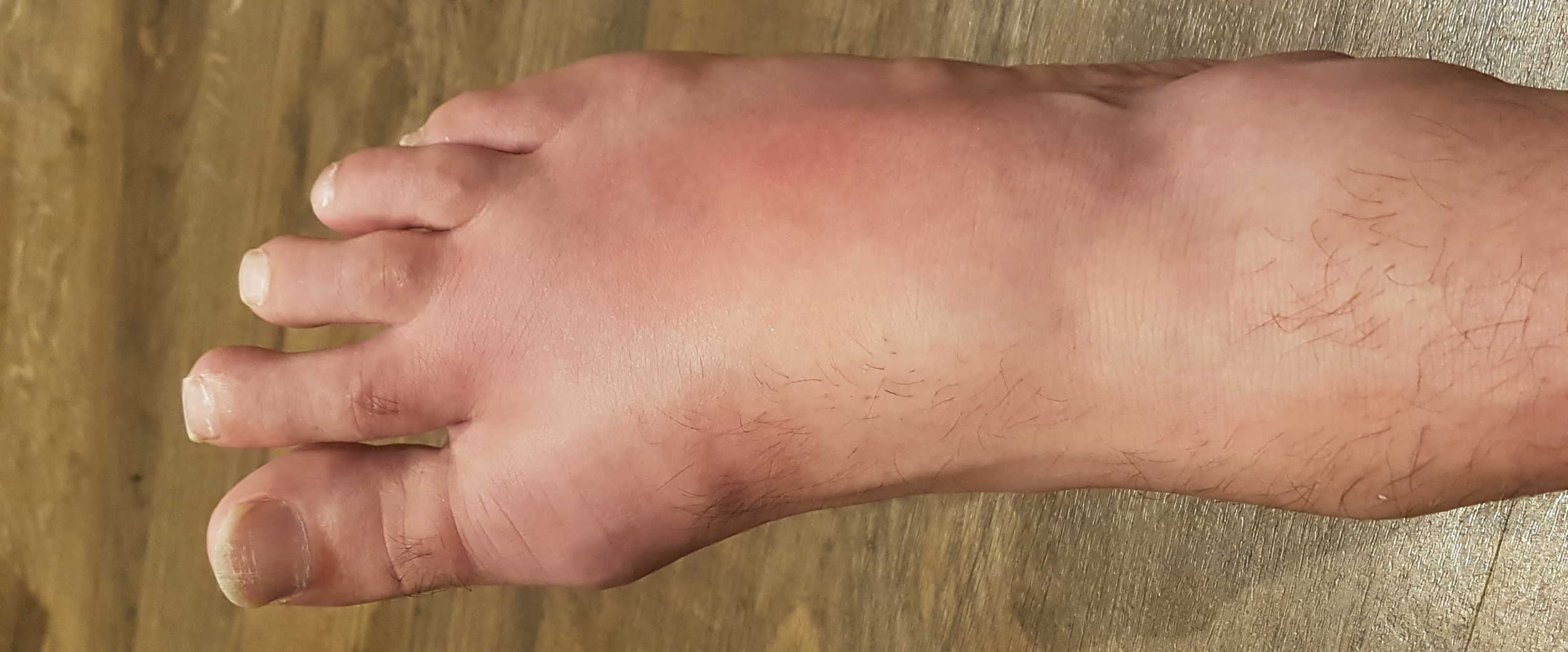
It was a gouty day. Gouty, gouty, gouty, gouty, gouty, gouty, gouty, gouty, gouty, gouty, gouty, gouty, gouty, gouty, gouty, gouty, gouty, gouty, gouty, gouty, gouty, gouty, gouty, gouty, gouty, gouty, gouty, gouty, gouty, gouty, gouty, gouty, gouty, gouty, gouty, gouty, gouty, gouty, gouty, gouty, gouty, gouty, gouty, gouty, gouty, gouty, gouty, gouty, gouty, gouty, gouty, gouty, gouty, gouty, gouty, gouty, gouty, gouty, gouty, gouty, gouty, gouty, gouty, gouty, gouty, gouty. Gouty, gouty, gouty, gouty, gouty, gouty, gouty, gouty, gouty, gouty, gouty, gouty, gouty, gouty, gouty, gouty, gouty, gouty, gouty, gouty, gouty, gouty, gouty, gouty, gouty, gouty, gouty, gouty, gouty, gouty, gouty, gouty, gouty, gouty, gouty, gouty, gouty, gouty, gouty, gouty, gouty, gouty, gouty, gouty, gouty, gouty, gouty, gouty, gouty. Gouty, gouty, gouty, gouty, gouty, gouty, gouty, gouty, gouty, gouty, gouty, gouty, gouty, gouty, gouty, gouty.
Gouty, gouty, gouty, gouty, gouty, gouty, gouty, gouty, gouty, gouty, gouty, gouty, gouty, gouty, gouty, gouty, gouty, gouty, gouty, gouty, gouty, gouty, gouty, gouty, gouty, gouty, gouty, gouty, gouty, gouty, gouty, gouty, gouty, gouty, gouty, gouty, gouty, gouty, gouty, gouty, gouty, gouty, gouty, gouty, gouty, gouty, gouty, gouty, gouty, gouty, gouty, gouty, gouty, gouty, gouty, gouty, gouty, gouty, gouty, gouty, gouty, gouty, gouty, gouty. Gouty, gouty, gouty, gouty, gouty, gouty, gouty, gouty, gouty, gouty, gouty, gouty, gouty, gouty, gouty, gouty, gouty, gouty, gouty, gouty, gouty, gouty, gouty, gouty, gouty, gouty, gouty, gouty, gouty, gouty, gouty, gouty, gouty, gouty, gouty, gouty, gouty, gouty, gouty, gouty, gouty, gouty, gouty, gouty, gouty, gouty, gouty, gouty, gouty, gouty, gouty, gouty, gouty, gouty, gouty, gouty, gouty, gouty, gouty, gouty, gouty, gouty, gouty, gouty, gouty, gouty, gouty, gouty, gouty, gouty, gouty, gouty, gouty, gouty, gouty, gouty, gouty, gouty, gouty, gouty, gouty, gouty, gouty, gouty, gouty, gouty, gouty, gouty, gouty, gouty, gouty, gouty, gouty, gouty.
Gouty, gouty, gouty, gouty, gouty, gouty, gouty, gouty, gouty, gouty, gouty, gouty, gouty, gouty, gouty, gouty, gouty, gouty, gouty, gouty, gouty, gouty, gouty, gouty, gouty, gouty, gouty, gouty, gouty, gouty, gouty, gouty, gouty, gouty, gouty, gouty, gouty, gouty, gouty, gouty, gouty, gouty, gouty, gouty, gouty, gouty, gouty, gouty, gouty, gouty, gouty, gouty, gouty, gouty, gouty, gouty, gouty, gouty, gouty, gouty, gouty, gouty, gouty, gouty, gouty, gouty, gouty, gouty, gouty, gouty, gouty, gouty, gouty, gouty, gouty, gouty, gouty, gouty, gouty, gouty, gouty, gouty, gouty, gouty, gouty, gouty, gouty, gouty, gouty, gouty, fishy, gouty, gouty, gouty, gouty, gouty, gouty, gouty, gouty, gouty, gouty, gouty, gouty, gouty, gouty, gouty, gouty, gouty, gouty, gouty, gouty, gouty, gouty, gouty, gouty, gouty, gouty, gouty, gouty, gouty, gouty, gouty, gouty, gouty, gouty, gouty, gouty, gouty, gouty, gouty, gouty, gouty, gouty.
Gouty, gouty, gouty, gouty, gouty, gouty, gouty, gouty, gouty, gouty, gouty, gouty, gouty, gouty, gouty, gouty, gouty, gouty, gouty, gouty, gouty, gouty, gouty, gouty, gouty, gouty, gouty, gouty, gouty, gouty, gouty, gouty, gouty, gouty, gouty, gouty, gouty, gouty, gouty, gouty, gouty, gouty, gouty, gouty, gouty, gouty, gouty, gouty, gouty, gouty, gouty, gouty, gouty, gouty, gouty, gouty, gouty, gouty, gouty, gouty, gouty, gouty, gouty, gouty, gouty, gouty, gouty, gouty, gouty, gouty, gouty, gouty, gouty, gouty, gouty, gouty, gouty, gouty, gouty, gouty, gouty, gouty, gouty, gouty, gouty, gouty, gouty, gouty, gouty, gouty, gouty, gouty, gouty, gouty, gouty, gouty, gouty, gouty, gouty, gouty, gouty, gouty, gouty, gouty, gouty.
Gouty, gouty, gouty, gouty, gouty, gouty, gouty, gouty, gouty, gouty, gouty, gouty, gouty, gouty, gouty, gouty, gouty, gouty, gouty, gouty, gouty, gouty, gouty, gouty, gouty, gouty, gouty, gouty, gouty, gouty, gouty, gouty, gouty, gouty, gouty, gouty, gouty, gouty, gouty, gouty, gouty, gouty, gouty, gouty, gouty, gouty, gouty, gouty, gouty, gouty, gouty, gouty, gouty, gouty, gouty, gouty, gouty, gouty, gouty, gouty, gouty, gouty, gouty, gouty, gouty, gouty, gouty. Gouty, gouty, gouty, gouty, gouty, gouty, gouty, gouty, gouty, gouty, gouty, gouty, gouty, gouty, gouty, gouty, gouty, gouty, gouty, gouty, gouty, gouty, gouty, gouty, gouty, gouty, gouty, gouty, gouty, gouty, gouty, gouty, gouty, gouty, gouty, gouty, gouty, gouty, gouty, gouty, gouty, gouty, gouty, gouty, gouty, gouty, gouty, gouty, gouty. Gouty, gouty, gouty, gouty, gouty, gouty, gouty, gouty, gouty, gouty, gouty, gouty, gouty, gouty, gouty, gouty, gouty, gouty, gouty, gouty, gouty, gouty, gouty, gouty, gouty, gouty, gouty, gouty, gouty, gouty, gouty, gouty, gouty, gouty, gouty, gouty, gouty, gouty, gouty, gouty, gouty, gouty, gouty, gouty, gouty, gouty, gouty, gouty, gouty, gouty, gouty, gouty, gouty, gouty, gouty, gouty, gouty, gouty, gouty, gouty, gouty, gouty, gouty, gouty, gouty, gouty, gouty.
Gouty, gouty, gouty, gouty, gouty, gouty, gouty, gouty, gouty, gouty, gouty, gouty, gouty, gouty, gouty, gouty, gouty, gouty, gouty, gouty, gouty, gouty, gouty, gouty, gouty, gouty, gouty, gouty, gouty, gouty, gouty, gouty, gouty, gouty, gouty, gouty, gouty, gouty, gouty, gouty, gouty, gouty, gouty, gouty, gouty, gouty, gouty, gouty, gouty, gouty, gouty, gouty, gouty, gouty, gouty, gouty, gouty. Gouty, gouty, gouty, gouty, gouty, gouty, gouty, gouty, gouty, gouty, gouty, gouty, gouty, gouty, gouty, gouty, gouty, gouty, gouty, gouty, gouty, gouty, gouty, gouty, gouty, gouty, gouty, gouty, gouty, gouty, gouty, gouty, gouty, gouty, gouty, gouty, gouty, gouty, gouty, gouty, gouty, gouty, gouty, gouty, gouty, gouty, gouty, gouty, gouty, gouty, gouty, gouty, gouty, gouty, gouty, gouty, gouty, gouty, gouty, gouty, gouty, gouty, gouty, gouty, gouty. Gouty, gouty, gouty, gouty, gouty, gouty, gouty, gouty, gouty, gouty, gouty, gouty, gouty, gouty, gouty, gouty, gouty, gouty, gouty, gouty, gouty, gouty, gouty, gouty, gouty, gouty, gouty, gouty, gouty, gouty, gouty, gouty, gouty, gouty, gouty, gouty, gouty, gouty, gouty, gouty, gouty, gouty, gouty, gouty, gouty, gouty, gouty, gouty, gouty, gouty, gouty, gouty, gouty, gouty, gouty, gouty, gouty, gouty, gouty, gouty, gouty, gouty.
Goosey Goosey Gander

Ah, Pluviôse - the season of eating goose stock. And some beef.
I've recently discovered the wonder of the 1871 French Revolutionary Calendar. Like all good commies the French revolutionaries determined to overthrow everything associated with the old order. And I mean everything, from money to timekeeping and their calendar. Starting again completely from scratch.
A Year Zero, if you will.
Their ridiculous months do have romantic names though, like Nivôse Pluviôse and Ventôse, cruelly mocked by British wits as Slippy, Drippy , and Nippy
Goose Consommé with Coriander Chicken Mousseline Quenelles
fowl soup
First catch your goose!
Ha - just kidding. This will be just fine made from chickens though I used our Christmas geese carcasses (yes, carcasses) to make my chicken stock.
However, it still benefitted from clarifying with some tasty alliums for extra fresh flavour.
Ha - just kidding. This will be just fine made from chickens though I used our Christmas geese carcasses (yes, carcasses) to make my chicken stock.
However, it still benefitted from clarifying with some tasty alliums for extra fresh flavour.
Serves 4
Ingredients
- 1.5l rich goose or chicken stock
- 1 chicken breast
- 2-3 egg whites
- couple of shallots
- a few garlic cloves
- ground pepper
For the Mousseline:- 1 chicken breast
- 1 egg white
- herbs, parsley or coriander
- nutmeg perhaps?
- about 30ml cream
- salt
First make your goose or chicken stock. A pretty dark, rich, tasty one will be required.
Then chill it and scrape all the solidified fat from the surface.
Make the Consommé:
Now clarify it: Blend a chicken breast with egg whites and shallots, garlic, pepper and any other flavourings you fancy infusing into the stock.
Whisk the mixture into the cold stock.
Clear an area at the edge of pan so you can see what's going on. After 15 minutes or so particles should stop rising and the soup be clear.
Without disturbing the raft too much use a ladle or better yet a turkey baster to extract the now clear stock through the hole you made in the raft.
Strain this through muslin or a coffee filter.
You will now have a beautifully glassy consommé
Make the Mousseline:
Blend another chicken breast with an egg white. Add herbs coriander for instance or spices I hear nutmeg is nice and a generous pinch of salt. You need to keep everything very cold while you do this so it retains plenty of air. Chill the mixture back down when smooth.
Cook the Quenelles:
Have a pan of barely simmering stock standing by and form the mousseline into quenelles with two teaspoons and drop them 4 or 6 at a time into the stock.
Scoop them out with a slotted spoon when after a few minutes they rise, cooked, to the surface. Set them aside.
Then chill it and scrape all the solidified fat from the surface.
Make the Consommé:
Now clarify it: Blend a chicken breast with egg whites and shallots, garlic, pepper and any other flavourings you fancy infusing into the stock.
Whisk the mixture into the cold stock.
If you don't whisk it in thoroughly and do as I did and just stir, the raft won't properly cohere.
Though it will still work.
Gradually heat the stock in a saucepan, whisking continuously to prevent particles from sticking to the bottom and sides, until the egg white begins to coagulate and float up to the top.
Now reduce the heat to barely a simmer and leave the chicken and egg to form a raft on the surface
- agitating occasionally to loosen any lumps from the bottom.Clear an area at the edge of pan so you can see what's going on. After 15 minutes or so particles should stop rising and the soup be clear.
Without disturbing the raft too much use a ladle or better yet a turkey baster to extract the now clear stock through the hole you made in the raft.
Strain this through muslin or a coffee filter.
You will now have a beautifully glassy consommé
Make the Mousseline:
Blend another chicken breast with an egg white. Add herbs coriander for instance or spices I hear nutmeg is nice and a generous pinch of salt. You need to keep everything very cold while you do this so it retains plenty of air. Chill the mixture back down when smooth.
I tried to pass it through a sieve at this point but it's extremely difficult. And I can't see how you could do it and keep the temperature low. So I gave up.
I suppose you could press just the puréed chicken through, chill it again, then mix with beaten egg whites and go from there.
My mousseline was perfectly adequate though. So there!
Now slowly beat in about 30 ml of double cream, so the mixture is loosened but not too sloppy.My mousseline was perfectly adequate though. So there!
Cook the Quenelles:
Have a pan of barely simmering stock standing by and form the mousseline into quenelles with two teaspoons and drop them 4 or 6 at a time into the stock.
Scoop them out with a slotted spoon when after a few minutes they rise, cooked, to the surface. Set them aside.
I made a poaching stock from the spare coriander leaves and stalks, and slices of ginger root.
You could keep the cooked quenelles overnight in the fridge if you needed to.
To serve, artfully place quenelles in a soup bowl. Re-heat the consommé gently without boiling and pour into the soup bowl. Float a coriander leaf or two on the surface.
You could keep the cooked quenelles overnight in the fridge if you needed to.
Nice, delicate, and very pretty.
Beef Consommé with Shin and Liver Forcemeat Tortellini
meat soup
First catch your cow!
Ha!
This works best with a rich, thick, tasty stock. So if your stock is thin then reduce it before starting. But not so much that it sets when it's cold: You'll need to be able to whisk in the egg whites before heating so that the albumen pulls the cloudy proteins out of the stock as it coagulates.
For the clarification you'll need super-lean beef to avoid having to remove all the fat afterwards. Shin or shank is good. Shin might be specifically the front leg or foreshank in the UK. Both foreshanks and hindshanks seem to be called shank in the U.S.
Ha!
This works best with a rich, thick, tasty stock. So if your stock is thin then reduce it before starting. But not so much that it sets when it's cold: You'll need to be able to whisk in the egg whites before heating so that the albumen pulls the cloudy proteins out of the stock as it coagulates.
For the clarification you'll need super-lean beef to avoid having to remove all the fat afterwards. Shin or shank is good. Shin might be specifically the front leg or foreshank in the UK. Both foreshanks and hindshanks seem to be called shank in the U.S.
Serves 8
Ingredients
- 3 litres strong beef stock
- 400-500g lean minced beef
- 3 tomatoes
- 1 celery stick
- 1-2 carrots
- 1 leek
- 2 garlic cloves
- crushed black peppercorns
- 4 egg whites
- thyme or other herbs
- parsley
For the Forcemeat:- beef shank
- white bread
- cream
- a splash of milk as required
- calf liver
- garlic
- a splash of cognac
- salt
- ground pepper
- herbs of choice
- egg yolk optional
- balsamic vinegar a good addition
- minced gherkin possibly?
For the Tortellinis:- egg yolks
- 40g fine flour per egg yolk
- olive oil
- milk
- salt
Serving Options:- carrot
- courgette
- watercress
- parsley leaves
Blend up the beef mince and tomato with the parsley. Add stock if you need to.
Mince the other vegetables and herbs. Stir them all into the cold stock, mixing well.
Whisk the egg whites and beat into the stock too.
Gradually warm the stock, stirring regularly, until it reaches boiling point and the egg begins to cohere.
Reduce the heat so that the stock is barely simmering and leave unmolested for 2 hours.
Decant the stock through the raft without disturbing it and strain it through muslin or cheesecloth to catch the last few bits.
Make the Forcemeat
Soak white bread in single cream, or double cream loosened with milk. Squeeze out any excess then blend it up with more of the minced shank and about half its weight in calve's liver. Add some garlic, a good splash of cognac, a generous pinch of salt, a good grinding of pepper, some herbs. You can add one of the spare egg yolks too if you like. Moisten it with more milk, cream or cognac if it's too thick to blend.
If this was a proper forcemeat you'd now be required to pass it through a sieve. If you don't, then be prepared for the occasional knot of gristle.
Use the egg yolks left over from clarifying the stock: Mix each yolk with about 40g of fine flour, a drizzle of olive oil, a splash of milk and a pinch of salt. Knead the mixture which should be soft and pliable but not wet. Leave it to rest for half an hour then roll out thinly enough to see the worktop through.
Using a 3" cookie cutter cut out disks of the pasta.
Place half a teaspoon of the forcemeat in the centre of each one you'll need surprisingly little or it will be too difficult to fold, moisten around the edges with water, fold the disk in half, press lightly, then fold the edge up and roll the ends of the semi-circle arms away from the fold until they meet on the back side.
Press them together to hold their shape.
Bring a pot of salted water to the boil, and simmer the tortellinies gently for about 5 minutes until they float and lighten in colour.
You can also shape some carrot or courgette cubes or balls if you have a melon baller and simmer those too.
Place three vegetables and three tortellinis in each warmed soup bowl, perhaps a watercress stalk if you have one, fill with the consommé, float a parsley leaf on top and serve.
Mince the other vegetables and herbs. Stir them all into the cold stock, mixing well.
Whisk the egg whites and beat into the stock too.
Gradually warm the stock, stirring regularly, until it reaches boiling point and the egg begins to cohere.
Reduce the heat so that the stock is barely simmering and leave unmolested for 2 hours.
Decant the stock through the raft without disturbing it and strain it through muslin or cheesecloth to catch the last few bits.
Probably you could just blend up everything and whisk it into the stock.
Though it's nice to have a vegetable mirepoix to give the raft some structure.
Theoretically you can carefully make a large hole in the edge of the raft and scoop out the clarified stock with a ladle. But I found a turkey baster easier to use without disturbing the raft too much.
Theoretically you can carefully make a large hole in the edge of the raft and scoop out the clarified stock with a ladle. But I found a turkey baster easier to use without disturbing the raft too much.
Make the Forcemeat
Soak white bread in single cream, or double cream loosened with milk. Squeeze out any excess then blend it up with more of the minced shank and about half its weight in calve's liver. Add some garlic, a good splash of cognac, a generous pinch of salt, a good grinding of pepper, some herbs. You can add one of the spare egg yolks too if you like. Moisten it with more milk, cream or cognac if it's too thick to blend.
If this was a proper forcemeat you'd now be required to pass it through a sieve. If you don't, then be prepared for the occasional knot of gristle.
Maybe add:
Make the Tortellinis- Some soy sauce? Nope. Not enough body.
- Balsamic vinegar? Yup. Sweet and rich.
- What about minced gherkin?
Use the egg yolks left over from clarifying the stock: Mix each yolk with about 40g of fine flour, a drizzle of olive oil, a splash of milk and a pinch of salt. Knead the mixture which should be soft and pliable but not wet. Leave it to rest for half an hour then roll out thinly enough to see the worktop through.
Using a 3" cookie cutter cut out disks of the pasta.
Place half a teaspoon of the forcemeat in the centre of each one you'll need surprisingly little or it will be too difficult to fold, moisten around the edges with water, fold the disk in half, press lightly, then fold the edge up and roll the ends of the semi-circle arms away from the fold until they meet on the back side.
Press them together to hold their shape.
Bring a pot of salted water to the boil, and simmer the tortellinies gently for about 5 minutes until they float and lighten in colour.
You can also shape some carrot or courgette cubes or balls if you have a melon baller and simmer those too.
You can keep the cooked tortellinis for up to a couple of days covered in the fridge.
Reheat them the same way before using.
Place three vegetables and three tortellinis in each warmed soup bowl, perhaps a watercress stalk if you have one, fill with the consommé, float a parsley leaf on top and serve.
An awful lot of trouble for scant reward - though it does look pretty.
If you want to reduce the risk of food poisoning yourself you can turn the forecemeat into proper pâté first,
and stuff the tortellinis with that instead.
Beef Liver Pâté with Peppercorns
meat starter snack
I started making this pâté without much enthusiasm because I had a lot of leftover filling from the
beef consommé tortellinis and needed to do something with it.
Which is why I began with puréed ingredients. So this might not be how you'd want to tackle a beef pâté. Like maybe you'd leave some of the mince beef un-puréed for the texture instead of adding the pork loin. I think you'd still want the pork fat though.
However, the result was surprisingly good.
Which is why I began with puréed ingredients. So this might not be how you'd want to tackle a beef pâté. Like maybe you'd leave some of the mince beef un-puréed for the texture instead of adding the pork loin. I think you'd still want the pork fat though.
However, the result was surprisingly good.
Makes about 400g
Ingredients
- 200g beef shank, minced
- 100g calf's liver
- slice white bread
- milk and cream
- 1 egg, 1 yolk
- cognac
- splash balsamic vinegar
- green peppercorns dried or in brine
- red peppercorns
- capers
- 100g fatty pork loin, finely chopped
- thyme, chopped
- half red onion, finely chopped
- 2 cloves garlic, sliced
- salt
Soak the bread in cream, adding a splash of milk if it's too thick.
Squeeze out any extra, then blend the bread, beef mince, beef liver, egg and cognac to a paste.
You can add more cream to loosen it, but don't go overboard.
Cut up the pork loin and the pork fat reasonably finely. Chop red onion or shallot. Finely slice a couple of garlic cloves. Fry the pork in enough oil to get things started. When it's taken on a little colour add the onion then the garlic and fry until they've softened.
Now mix into the pâté along with the peppercorns, capers and chopped thyme.
Season.
Set aside for the flavours to marinate, unless you're in a hurry. It will keep in the fridge for a couple of days. Cover the surface with balsamic vinegar to stop it browning.
Pre-heat the oven to 150-165°C; Gas Mark 2-3.
Prepare a pâté dish or a small loaf tin - you can line it with baking parchment (or foil) to make removing the pâté easier if you like, or oil it lightly.
Mix the balsamic through the pâté, fill the tin and smooth off the top.
Cover the tin tightly with foil or fold the foil lining over if using and sit in a casserole dish or a water bath.
Fill with boiling water to come at least half way up the pâté dish.
Bake for 70-90 minutes until the pâté firms up and the centre reaches 65-70°C.
Arrange something heavy to press down on the pâté and set to chill overnight in the fridge.
Melt butter over the pâté dish to prevent oxidation and browning.
If you need to remove the pâté from the loaf tin you should be able to manage it easily by dipping the tin in hot water for a few seconds.
If you didn't already cook the pâté in parchment you should wrap it in buttered paper now to prevent it browning.
Cut up the pork loin and the pork fat reasonably finely. Chop red onion or shallot. Finely slice a couple of garlic cloves. Fry the pork in enough oil to get things started. When it's taken on a little colour add the onion then the garlic and fry until they've softened.
Now mix into the pâté along with the peppercorns, capers and chopped thyme.
Season.
Set aside for the flavours to marinate, unless you're in a hurry. It will keep in the fridge for a couple of days. Cover the surface with balsamic vinegar to stop it browning.
It's probably a good idea to slightly crush the brined green peppercorns.
You can overdo the peppercorns though they're an excellent addition.
Fry up a spoonful of the mixture to check the seasonings.
Fry up a spoonful of the mixture to check the seasonings.
Pre-heat the oven to 150-165°C; Gas Mark 2-3.
Prepare a pâté dish or a small loaf tin - you can line it with baking parchment (or foil) to make removing the pâté easier if you like, or oil it lightly.
Mix the balsamic through the pâté, fill the tin and smooth off the top.
Cover the tin tightly with foil or fold the foil lining over if using and sit in a casserole dish or a water bath.
Fill with boiling water to come at least half way up the pâté dish.
Bake for 70-90 minutes until the pâté firms up and the centre reaches 65-70°C.
Arrange something heavy to press down on the pâté and set to chill overnight in the fridge.
Melt butter over the pâté dish to prevent oxidation and browning.
If you need to remove the pâté from the loaf tin you should be able to manage it easily by dipping the tin in hot water for a few seconds.
If you didn't already cook the pâté in parchment you should wrap it in buttered paper now to prevent it browning.
Really good, actually. I must admit I surprised myself!
Misletoe and Whine

I remember the days when I used to go out and get pissed on Christmas Eve and it would be Mum who got all moany and upset.
Now I live with my brother! Miserable git.
Fortunately Kurt's temper improved by Christmas morning after overcoming his jealousy at having to stay at home with the kid while I went out partying.
There were some early snow and early freezes this year - good for riming spider webs, not so good for Kirklees College cookery courses :(
Then as usual I kicked off the festive season using a chicken carcass to make a deep, rich, dark, chicken stock for the gravy - so we don't have to rely on whatever meagre juices cook off the goose on the day. Or days 🙂 And with the chicken flesh I made my usual Tom Khaa Kai. This year I discovered the notable enhancement of adding a few spoonfuls of Thai red curry paste to spice up the soup.
Tom Yum! Oh no wait, that's a different soup.
Bit of a fowl-up this year; what with all the human, pangolin and bird flu going around we had trouble finding fresh geese. So we ended up with two smaller frozen ones.
It all worked out though. We just had two Christmas dinners that couldn't be beat. The second on the day after boxing day.
As for the rest:
- The best starter - finally one the Philistines enjoyed! And all it took was wrapping some sausages in bacon. Who would have guessed?
- The best wines
- The best champagne - a Pol Roger. Not sure I've had one before, apparently it was Winston Churchill's favourite. Well, he had good taste!
- A fine Pauillac
- A lovely candle from Flora that glows mysteriously when lit. I know, right?
- This year's festive drink was hot white chocolate with crispy strawberry bits courtesy of Lidl, with peppermint schnapps. Well, Creme de Menthe. Which is kind of minty.
- Then finally - to finish the feast of Christmas - Tartiflettish. Like tartiflette, but less neatly sliced and layered, and using up the last random Christmas cheeses.
Sausages in Candied Bacon with Mulled Cranberry Ketchup
starter meat
Seemed like an ideal, no-brainer Christmas starter for Philistines.
Just follow Chef Nick's easy instructions, right?
Wrong!
Good job I had a practice run - 20 minutes at Gas Mark 2 my arse!
And do you think your guests will be satisfied with 2 fucking chipolatas with their pint of Sharp's Cornish amber ale?
Great British Chefs? Incompetent British Muppets more like!
Just follow Chef Nick's easy instructions, right?
Wrong!
Good job I had a practice run - 20 minutes at Gas Mark 2 my arse!
And do you think your guests will be satisfied with 2 fucking chipolatas with their pint of Sharp's Cornish amber ale?
Great British Chefs? Incompetent British Muppets more like!
Serves 4 2
Ingredients
- 8 chipolatas
- 8 rashers of smoked streaky bacon
- 170g of light brown sugar
- freshly ground black pepper
For the Ketchup:- 200g of cranberries, fresh
- 1 knob of unsalted butter
- 1 tsp finely grated ginger
- 50g of light brown sugar
- 50ml of port
- 1 tsp ground cinnamon
- 1 tsp freshly ground nutmeg
- 1 orange, zested and juiced
- 2 star anise
Begin by making the ketchup, as this can be done in advance and will keep for up to 2 weeks in an airtight container in the fridge.
Add the cranberries and butter to a saucepan over a high heat, then cook, stirring regularly, until the cranberries are popping and hissing. Add the grated ginger, sugar and port and cook for a further 5 minutes.
Reduce the heat to a simmer and add the cinnamon, nutmeg, star anise, orange juice and zest. Use a wooden spoon to gently mash the cranberries and break them up, adding a splash of water if they begin to stick to the bottom of the pan. Gently cook for 10-15 minutes until they form a thick sauce, then pick out and discard the star anise. Taste and add more sugar if desired.
Use a hand blender or potato masher to break down the cranberries further, then allow to cool. Store in the fridge until needed.
For the sausages, preheat an oven to 150°C/gas mark 2 LOL, no! Try 190-170°C/Gas 5-4. Pour the sugar in a bowl with a generous pinch of black pepper. Add the bacon, tossing well to coat. Wrap each piece of bacon around a sausage, stretching lightly and covering it as much as possible.
Place the bacon-wrapped sausages on a baking tray and drizzle with oil and cook for 20 minutes, LOL, no! Try 30 minutes. Minimum. leaving them for a few extra minutes if needed until the bacon has crisped up. Serve on a platter with the ketchup on the side, with a glass of Sharp's Doom Bar.
Add the cranberries and butter to a saucepan over a high heat, then cook, stirring regularly, until the cranberries are popping and hissing. Add the grated ginger, sugar and port and cook for a further 5 minutes.
Reduce the heat to a simmer and add the cinnamon, nutmeg, star anise, orange juice and zest. Use a wooden spoon to gently mash the cranberries and break them up, adding a splash of water if they begin to stick to the bottom of the pan. Gently cook for 10-15 minutes until they form a thick sauce, then pick out and discard the star anise. Taste and add more sugar if desired.
Use a hand blender or potato masher to break down the cranberries further, then allow to cool. Store in the fridge until needed.
For the sausages, preheat an oven to 150°C/gas mark 2 LOL, no! Try 190-170°C/Gas 5-4. Pour the sugar in a bowl with a generous pinch of black pepper. Add the bacon, tossing well to coat. Wrap each piece of bacon around a sausage, stretching lightly and covering it as much as possible.
Place the bacon-wrapped sausages on a baking tray and drizzle with oil and cook for 20 minutes, LOL, no! Try 30 minutes. Minimum. leaving them for a few extra minutes if needed until the bacon has crisped up. Serve on a platter with the ketchup on the side, with a glass of Sharp's Doom Bar.
LOL no!.
You'll need to bake your pigs for about 30 minutes at Gas Mark 5-4.
After which they'll go down well with the sausage-eaters.
You'll need to bake your pigs for about 30 minutes at Gas Mark 5-4.
After which they'll go down well with the sausage-eaters.
Fried Christmas Pudding
breakfast snack veg cheese
Once again we find ourselves with a glut of Christmas pudding to finish up.
Nothing wrong with the pudding - it's just hard to eat much after you've just gobbled up an entire flock of geese.
So I re-discovered 2017's fried pudding with blue cheese. Surprisingly good.
Here are some other ideas for getting rid of your excess pudding:
The commentators at this Guardian article on using up Christmas leftovers write that Leftover pudding makes lovely mini trifles - a little pudding in a shot glass, topped up with crème fraîche with some orange zest stirred through., that As for leftover Christmas pudding - fry it in butter and eat it with cream. It's an old Dublin thing, it's delicious. and Ottolenghi suggests that breaking up and heating Christmas pudding in a pan with brandy. Grate your dying satsumas and add the zest. At the end, add peeled slices of the not-too-desiccated insides. Serve with whipped cream sharpened with sour cream..
Jamie Bastard Oliver gobs up an ice cream sundae:
Fry pudding until crisping. Once your pudding is warm and slightly crispy and the sauce has heated up, divide half of your pudding between your four glasses or bowls. Add a scoop of vanilla ice cream on top of the pudding, drizzle over your hot cranberry sauce, and a good sprinkling of toasted flaked almonds. Divide the remaining Christmas pud between your glasses and layer again with ice cream, cranberry sauce and flaked almonds. Finish the sundae off by grating over a bit of nice dark chocolate and dig in before the ice cream melts.
Another Guardian suggestion for Christmas pudding crème brulées. And in this Guardian article chef Jesse Dunford Wood says I like to make Christmas pudding vodka. Simply add your puddings to half a bottle of vodka, leave to infuse for a day or so, strain and enjoy.
Finally the Spruce Eats offers these suggestions:
Here are some other ideas for getting rid of your excess pudding:
The commentators at this Guardian article on using up Christmas leftovers write that Leftover pudding makes lovely mini trifles - a little pudding in a shot glass, topped up with crème fraîche with some orange zest stirred through., that As for leftover Christmas pudding - fry it in butter and eat it with cream. It's an old Dublin thing, it's delicious. and Ottolenghi suggests that breaking up and heating Christmas pudding in a pan with brandy. Grate your dying satsumas and add the zest. At the end, add peeled slices of the not-too-desiccated insides. Serve with whipped cream sharpened with sour cream..
Jamie Bastard Oliver gobs up an ice cream sundae:
Fry pudding until crisping. Once your pudding is warm and slightly crispy and the sauce has heated up, divide half of your pudding between your four glasses or bowls. Add a scoop of vanilla ice cream on top of the pudding, drizzle over your hot cranberry sauce, and a good sprinkling of toasted flaked almonds. Divide the remaining Christmas pud between your glasses and layer again with ice cream, cranberry sauce and flaked almonds. Finish the sundae off by grating over a bit of nice dark chocolate and dig in before the ice cream melts.
Another Guardian suggestion for Christmas pudding crème brulées. And in this Guardian article chef Jesse Dunford Wood says I like to make Christmas pudding vodka. Simply add your puddings to half a bottle of vodka, leave to infuse for a day or so, strain and enjoy.
Finally the Spruce Eats offers these suggestions:
- Christmas Pudding Ice Cream with vanilla or ginger! ice cream.
- Christmas Pudding Trifle.
- Christmas Pudding Tipsy Laird. Like trifle, but with whisky.
- Christmas Pudding Full English Breakfast !
Ingredients
- Christmas pudding
- blue cheese
Options:- bacon
Fry the pudding until it begins to crisp up around the edges. You probably won't need to add any fat - your pudding is likely full of lard, but throw in a little butter otherwise.
Flip it around and crumble or chop in some gooey blue cheese. Allow the cheese to melt nicely, then serve.
Strangely delicious.
You can also fry up some bacon with the pudding, which also goes surprisingly well. So maybe sausages, eggs and beans would too?
You can also fry up some bacon with the pudding, which also goes surprisingly well. So maybe sausages, eggs and beans would too?
Lobster Ahoy
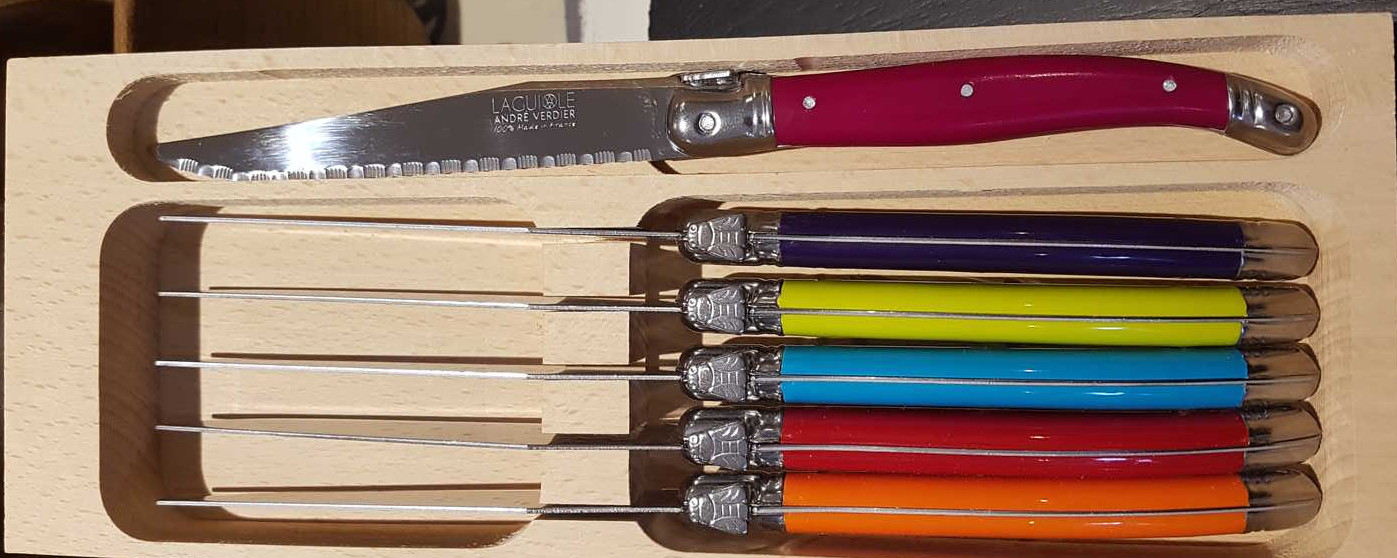
I got my brother a set of fine steak knives on his birthday for me to use. They're Laguiole - the fancy French ones with the little bumble bee emblems.
I had a craving for lobster. I don't know why.
I think it started with the Deconstructed grilled Caesar salad.
I had a craving for Caesar salad. I don't know why.
But now I can at least stab it with my Kurt's steely knives.
In Which Karl Solves Wind Turbines

I solved wind turbines.
You're welcome!
The problem with the electricity from wind turbines, and solar panels of course, is that it's useless. It's unreliable. It's available only when the weather permits it. Imagine that you're a householder or an industrialist and someone offers to sell you electricity. Cheap electricity. "Great!" you say - I'll need 2KW available 9-5 and I guess I can manage with 1KW the rest of the day. "No." says the salesgit, "You don't understand." says the salesgit, "You can only use our electricity when we randomly produce it. Not whenever you want it." "Oh!" says you. "No thanks" says you. "That's useless to me." says you. Because it's useless to you. It's useless to anyone. Unless they happen to be in the electricity storage business. Which is why wind electricity - unreliable electricity - is worthless. Which is why no-one will buy it.
But the Government wants to sell it. They're desperate to sell it. They need to sell it so that they can save the world from climate, and make all their land-owning friends rich in the process. So the Government forces the national electricity grid to buy it anyway. Simple. Problem solved. Right?
Wrong.
Here's what happens now.
That useless, worthless electricity that the national grid now has to buy displaces valuable, reliable, dispatchable electricity from power stations. So the power stations sell less of their electricity, so they have to put up their prices to cover their costs. So your electricity prices go up. Because you now have to pay for the reliable useful electricity that you still need as well as all that worthless unreliable electricity that the grid is paying full price for. So you use less. The industrialists use less - they shutter their factories or move them abroad. So the power stations sell less, so they start to cut back on their electricity production. They cut down on maintenance, on fuel stocks, on future investments. They close down perfectly good power stations that have now become uneconomic. Or immoral. Or racist.
So now, your electricity is more expensive and it's less reliable. There are brownouts. Blackouts.
The more useless, worthless, unreliable electricity the Government forces the grid to buy the more expensive and less reliable your electricity inevitably becomes. It's happening in Germany. It's happening in the UK. It's happening in California. It's happening in Australia. It's happening in Texas, of all places.
And there's no way of avoiding it. It's inescapable.
Because without storage, unreliable electricity is useless and worthless. And battery storage is far, far too expensive. And hydrogen storage is too stupid and dangerous. And pumped hydro is too difficult and long-term an investment for Governments which have hungry land-owning friends who want their subsidies NOW.
But.
There is a simple solution. Because there's a perfectly good purchaser of unreliable electricity with plenty of storage right there. Already built into the system: The power stations!
They have storage in the form of fossil fuels. And they would happily buy unreliable electricity, stabilise it through their power stations, and sell it to their existing customers if that meant they could save money on their fossil fuel usage and increase their profits. If the wind farms can produce electricity cheaper than power stations. And if the wind farms will sell their unreliable, cheap, electricity to power stations for less than the power stations would spend on the fuels needed to produce that same electricity then the power stations will buy it. They will buy it of their own free will. Because it will make them more money. And save their fossil fuels. And save consumers money. And save the planet from the climate. Everyone wins!
But of course, it won't happen.
Because Governments are stupid and feckless and their land-owning friends are clever and greedy. The wind farms don't have to sell their electricity to power stations for less than the cost of reliable electricity, because the Government has guaranteed them the price of reliable electricity. And so they won't. They'll keep on selling it to you for full price.
So better get used to unaffordable electricity and rolling blackouts. It's the new normal.
Have an egg.
Chaud-Froid d'oeuf
Arpège Eggs
Arpège Eggs
starter snack veg
About 35 years ago in 1986 a superstar chef called Alain Passard working at his Michelin-starred Paris Restaurant L'Arpège managed the impossible:
he invented a new way to boil an egg!
Variously known as the Arpège Egg, Chaud-Froid d’Oeuf (Hot-Cold Egg), or Coquetier Maison de Cuisine (House Egg) at the Arpège itself.
The concept is a fusion of oppositions - the warm yolk and the cold cream, the sulfurous chives and the sugary syrup.
Of course Passard is also responsible for a Frankenstein monstrosity called Corps à Corps (Body-to-Body), consisting of half a chicken inelegantly stitched to half a duck. So he's not really all that.
Perhaps unsurpisingly, he is also now mostly a vegetarian.
Anyway, here is that egg.
Work fast to serve it immediately after assembly lest its essences miscegenate like an uncomfortable chiducken.
Variously known as the Arpège Egg, Chaud-Froid d’Oeuf (Hot-Cold Egg), or Coquetier Maison de Cuisine (House Egg) at the Arpège itself.
The concept is a fusion of oppositions - the warm yolk and the cold cream, the sulfurous chives and the sugary syrup.
Of course Passard is also responsible for a Frankenstein monstrosity called Corps à Corps (Body-to-Body), consisting of half a chicken inelegantly stitched to half a duck. So he's not really all that.
Perhaps unsurpisingly, he is also now mostly a vegetarian.
Anyway, here is that egg.
Work fast to serve it immediately after assembly lest its essences miscegenate like an uncomfortable chiducken.
Serves 4
Ingredients
- 4 eggs
- pinches of ground black pepper
- 4 tbsp chives, chopped
- 150ml double cream
- splash sherry vinegar
- Quatre Epices - pinches of nutmeg, ginger, white pepper and cloves
- drizzles of maple syrup
Cut open the eggs with an egg topper, and discard the whites, restraining the unbroken yolk with your fingers, or a spoon, or whatever.
Keep the eggs in their carton while you work on them.
Lower the eggs to float in simmering water, switch off the heat, and allow to cook for 3 mins.
Add a few dashes of sherry vinegar to taste, and whip the cream to very soft peaks. You can chill the bowl you're using if you want to keep the temperature low.
Fill a piping bag with the mixture if you intend to pipe the cream.
Take the eggs from the water and carefully spoon or pipe the whipped cream on top to almost fill the egg shells.
Drizzle with maple syrup, sprinkle with chopped chives, and serve immediately in egg cups.
An egg topper, sure.
Well, I remembered from my childhood a Ladybird-type science book that described a trick for cutting sheets of glass with an ordinary pair of scissors by holding the glass underwater. So I had a go at neatly sawing off the top of the eggs with a fine hacksaw blade by holding them underwater.
It works pretty well - draw your guide mark around the egg about ½" below the tip. After which you can cut through the remaining membrane with a scalpel and empty out the contents.
Don't use marker pen as it will stain the shell and you'll have to use vinegar to remove it which also bleaches the shell resulting in an oddly mottled appearance.
You could try pencil?
Word on the street is that the eggs will float better for simmering if you cut off their fat end. Take that Lilliputians!
Season each yolk with a pinch of black pepper and sea salt, and three scoops of chives applied with a small melon baller.Well, I remembered from my childhood a Ladybird-type science book that described a trick for cutting sheets of glass with an ordinary pair of scissors by holding the glass underwater. So I had a go at neatly sawing off the top of the eggs with a fine hacksaw blade by holding them underwater.
It works pretty well - draw your guide mark around the egg about ½" below the tip. After which you can cut through the remaining membrane with a scalpel and empty out the contents.
Don't use marker pen as it will stain the shell and you'll have to use vinegar to remove it which also bleaches the shell resulting in an oddly mottled appearance.
You could try pencil?
Word on the street is that the eggs will float better for simmering if you cut off their fat end. Take that Lilliputians!
Lower the eggs to float in simmering water, switch off the heat, and allow to cook for 3 mins.
The yolks should be warmed but not set.
Meanwhile season the cream with four pinches each of sea salt, pinches of nutmeg, ginger, white pepper and cloves.
Opinions vary on the precise seasonings. If any. These four constitute the traditional French quatre epices.Add a few dashes of sherry vinegar to taste, and whip the cream to very soft peaks. You can chill the bowl you're using if you want to keep the temperature low.
Fill a piping bag with the mixture if you intend to pipe the cream.
Take the eggs from the water and carefully spoon or pipe the whipped cream on top to almost fill the egg shells.
Drizzle with maple syrup, sprinkle with chopped chives, and serve immediately in egg cups.
Interesting. Not earth-shattering. But still, they are just boiled eggs.
I was quite proud of my neat topping process though.
You could experiment with other flavours, Passard has suggested substituting chervil or tarragon for the chives, and Californian David Kinch uses coriander honey and a coriander flower as a finish over lemon cream.
You could experiment with other flavours, Passard has suggested substituting chervil or tarragon for the chives, and Californian David Kinch uses coriander honey and a coriander flower as a finish over lemon cream.
He's Not Dead!

He's resting.
Pining for the fjords.
But he's still cooking. So maybe I'll just leave all these recipes here. Until I get motivated to record the hilarious anecdotes which go with them.
I'm Dreaming of a White Day Within the Window of Christmas

Well it snowed. Feebly. Early on Boxing Day morning.
Wooo!
When I was a kid it snowed on Christmas Day every year. All day. Just like in the bible.
How I miss those classic Christian holidays 😢
Well, you know the drill by now - presents, drink, comedy starter, goose dinner - table groaning under all the trimmings, crackers, pudding, grumpy child....
I got a rather spectacular bottle of Mammoth vodka this year Thanks Kurt! - so good it would have been criminal to mix it. And I found some rather fetching plum pudding cruets in a charity shop. Or was that last year. Anyway, don't they make a fine set?
My Christmas cracker this year had an unnecessarily challenging dingbat puzzle which took me two days to solve.
Now you can enjoy it too!
These are quality crackers mind - I've been putting my bottle opener gift to good use every bath night, though the hat was still shit.
To go with this year's infeasibly massive cheese hamper (pre-ordered from Czerwik's Wine & Cheesemonger don't you know) I also found some really good, limited edition, truffle flavoured crisps that I liked.
They've gone now. Hope they come back next year (looking at YOU Local Fucking Supermarket™).
In keeping with my old-fashioned views on appropriate yule weather, I still send snail-mail cards at Christmas. Due to the rate at which my old friends have started moving, or dying, this year I decided to write my return address on the back of all of them, just in case. Colour me surprised when the card I sent to my relatives in Canada was returned to sender - address unknown.
I've been sending a card to the same house for decades without adding a return address so who knows how long ago they quietly moved? Or died?
So Merry Christmas and a Happy 2022 wherever you are Aunty Dawn.
Ya Dick!
Cranberry Tuile with Stilton Foam
starter snack veg cheese
The original article's photos of this pretty red and white dish
looked perfect for Christmas, so I decided to give it a go.
As instructed I used a Grenache heavy fruity Côtes du Rhônes red wine, but I substituted 100g of mild and creamy blue cambazola for the stilton, since I was making it for diners who don't really like strong cheese and the foam I made was delicious. Though it did take two nitrous charges to foam properly, not the one.
Getting the purée spread smoothly and evenly and with the right thickness is the trickiest part. Except for rolling them into cigars. That's also the trickiest part 😉 I bought a smooth silicon mat which is pretty essential for the baking, and an extra-wide cake scraper for the purée spreading. This will make about enough purée to cover two 12" square baking sheets, producing about a dozen tuiles. (Or tuile-like shapes 🙂) But I think these would actually be better shorter than the 12cm suggested - maybe about half that length.
I didn't quite figure out the secret to always getting the tuiles uniformly crispy, as opposed to sadly leathery:
Obviously they need to be baked the correct amount of time - too little and they won't completely harden, too much and they'll shatter before you can roll them up. Which timing and success also depends on the thickness and even-ness of the layer you made.
And obviously they must then be stored in a dry environment - I added a couple of silica gel packets to a tupperware container which I stored in the fridge, though that may not have been ideal.
And even more obviously they must be served immediately after filling.
But there was still some variation in mine.
As instructed I used a Grenache heavy fruity Côtes du Rhônes red wine, but I substituted 100g of mild and creamy blue cambazola for the stilton, since I was making it for diners who don't really like strong cheese and the foam I made was delicious. Though it did take two nitrous charges to foam properly, not the one.
Getting the purée spread smoothly and evenly and with the right thickness is the trickiest part. Except for rolling them into cigars. That's also the trickiest part 😉 I bought a smooth silicon mat which is pretty essential for the baking, and an extra-wide cake scraper for the purée spreading. This will make about enough purée to cover two 12" square baking sheets, producing about a dozen tuiles. (Or tuile-like shapes 🙂) But I think these would actually be better shorter than the 12cm suggested - maybe about half that length.
I didn't quite figure out the secret to always getting the tuiles uniformly crispy, as opposed to sadly leathery:
Obviously they need to be baked the correct amount of time - too little and they won't completely harden, too much and they'll shatter before you can roll them up. Which timing and success also depends on the thickness and even-ness of the layer you made.
And obviously they must then be stored in a dry environment - I added a couple of silica gel packets to a tupperware container which I stored in the fridge, though that may not have been ideal.
And even more obviously they must be served immediately after filling.
But there was still some variation in mine.
Makes about 8-12 of the full-length tuiles.
Ingredients
Cranberry tuile:- 20g of Isomalt sugar you can use up to 30g I reckon
Cranberry purée:- 200ml of red wine
- 250g of frozen cranberries
- 4 tbsp of caster sugar
Stilton foam:- 95g of Colston Basset stilton or something milder
- 250ml of double cream
- 150ml of whole milk
- 1 pinch of salt
To make the cranberry purée, bring the wine to a boil and reduce it to 75ml.
Place the cranberries in a pan and pour over the reduced red wine whilst still hot. Bring to the boil, reduce the heat and cook until the cranberries start to collapse.
Whizz in a food blender until smooth.
Pass through a fine sieve, add sugar to taste, and cool. Store until required.
To make the cranberry tuile, heat the oven to 90°C. Put the cranberry purée and Isomalt sugar up to 30g seems to be fine, maybe even better into a pan and place on the stove, warming just enough for the sugar to dissolve, stirring continuously.
Pour onto a silicon baking mat and, using a 24cm/12inch step pallet knife, spread a thin, even layer of the mixture over the surface of the mat.
Cook for 45 - 50 minutes or until set.
Once set, remove from the oven and carefully peel the sheet of tuile off the mat and put it on a board. Cut out 6cm x 12cm 6cm x 7cm? rectangles and return these to the mat, shiny side down.
Put back into the oven and continue drying for a further 45 minutes or longer.
Place the cranberries in a pan and pour over the reduced red wine whilst still hot. Bring to the boil, reduce the heat and cook until the cranberries start to collapse.
Whizz in a food blender until smooth.
Pass through a fine sieve, add sugar to taste, and cool. Store until required.
To make the cranberry tuile, heat the oven to 90°C. Put the cranberry purée and Isomalt sugar up to 30g seems to be fine, maybe even better into a pan and place on the stove, warming just enough for the sugar to dissolve, stirring continuously.
Pour onto a silicon baking mat and, using a 24cm/12inch step pallet knife, spread a thin, even layer of the mixture over the surface of the mat.
Cook for 45 - 50 minutes or until set.
Once set, remove from the oven and carefully peel the sheet of tuile off the mat and put it on a board. Cut out 6cm x 12cm 6cm x 7cm? rectangles and return these to the mat, shiny side down.
Put back into the oven and continue drying for a further 45 minutes or longer.
Mine took about an hour the first round and maybe a bit longer the second.
On the first round you want the sheet to be firm enough to hold together when you peel it off the silicon mat, but pliable enough to not break when you bend or cut it. I found it easiest to turn the silicon baking mat upside down, carefully pry loose one end of the sheet with a knife and then peel the mat away from from the cranberry sheet, rather than the other way around.
For the second round you need the rectangles just soft enough to work with, but for them to quickly harden up in perhaps 30 seconds. I peeled off one rectangle at a time from the baking sheet inside the oven, leaving the others there while I rolled that rectangle up. Then you don't need to rush, or worry about the others setting too soon.
While the tuiles are still warm wrap them around 12cm long metal tubes that are 2cm in diameter.
As the tuiles cool you can remove the tube and they will crisp up. Store in an airtight container until required.On the first round you want the sheet to be firm enough to hold together when you peel it off the silicon mat, but pliable enough to not break when you bend or cut it. I found it easiest to turn the silicon baking mat upside down, carefully pry loose one end of the sheet with a knife and then peel the mat away from from the cranberry sheet, rather than the other way around.
For the second round you need the rectangles just soft enough to work with, but for them to quickly harden up in perhaps 30 seconds. I peeled off one rectangle at a time from the baking sheet inside the oven, leaving the others there while I rolled that rectangle up. Then you don't need to rush, or worry about the others setting too soon.
Oh, you can remove the tube can you?
I tried everything to prevent the rolled candy from sticking to my metal tube (except trying a wooden one?) - wiping it with a damp cloth (obviously a bad idea), brushing it with icing sugar, greasing it lightly with oil. Nothing worked.
In the end I just used the pipe as a loose guide for the rolling process, never pressing the tuile too firmly against the metal. Some of the cylinders stiffened up almost immediately, but I also had on hand some short pieces of string to tie around those which took a little longer to harden while I got on with the next one.
You need the candy rectangles to be wide enough to either overlap when rolled or have the ends just meet and press together. It's probably better to overlap the roll a little so there's no gap for the foam to squirt out of when you fill them. After a practice round I cut mine wider than suggested at 7cm to (gently) wrap around a 2cm diameter tube.
To make the Stilton foam, bring the milk and cream up to the boil, reduce the heat, add the cheese and allow to melt.
Mix using a hand blender, then pass the mixture through a fine sieve.
Pour into a ½ litre espuma gun, turn upside down, and charge once or twice! with an ISI charger.
Shake lightly and store in the fridge until required.
I tried everything to prevent the rolled candy from sticking to my metal tube (except trying a wooden one?) - wiping it with a damp cloth (obviously a bad idea), brushing it with icing sugar, greasing it lightly with oil. Nothing worked.
In the end I just used the pipe as a loose guide for the rolling process, never pressing the tuile too firmly against the metal. Some of the cylinders stiffened up almost immediately, but I also had on hand some short pieces of string to tie around those which took a little longer to harden while I got on with the next one.
You need the candy rectangles to be wide enough to either overlap when rolled or have the ends just meet and press together. It's probably better to overlap the roll a little so there's no gap for the foam to squirt out of when you fill them. After a practice round I cut mine wider than suggested at 7cm to (gently) wrap around a 2cm diameter tube.
I let my mixture cool in the foamer before sealing and charging. I don't know if it makes any difference.
To serve, fill the tubes with the Stilton foam using the espuma gun.
Arrange on a plate or bowl, and serve immediately.
Most excellent!
Though an awful lot of trouble for a couple of tuiles per person!
Leftover Christmas Quiche
main fowl cheese
Stuff all your leftover Christmas into one glorious quiche!
I had goose stuffing, herbs, cheese (no, not all my good Christmas cheeses - just the rubbish ones - Lancashire, some cheap cheddar, and a goat brie) and, bizarrely, spinach.
I had goose stuffing, herbs, cheese (no, not all my good Christmas cheeses - just the rubbish ones - Lancashire, some cheap cheddar, and a goat brie) and, bizarrely, spinach.
Serves 6
Ingredients
For the Pastry:- 6 oz plain flour
- 3 oz lard or butter, chilled, diced
- ½ tsp salt
- a few spoons cold water
For the Filling:- 200ml double cream
- 50-100ml milk
- 4-5 eggs
- salt &pepper
- cheese, sliced or grated
- Christmas leftovers
Sift the flour into a bowl, sprinkle in a little salt, and quickly rub in the diced fat. Don't overwork it.
When you reach coarse breadcrumbs, gradually cut in cold water with a knife until the mixture begins to cohere.
Gather into a ball, wrap in clingfilm and chill for half an hour.
Preheat the oven to 200°C/Gas Mark 6.
Roll out the dough and line a quiche dish or in my case a ludicrously deep oven dish. Chill again for 30 minutes if you can be bothered. Prick all over with a fork, line with baking paper or foil, fill with baking beans and bake in the centre of the oven for 10 minutes. Remove the beans and paper, return to the oven and bake for a further 10 minutes until the pastry is cooked and colouring lightly.
Turn the oven down to 180°C/Gas Mark 5 or lower, if you have a deep, fat quiche like mine.
Cover the base of the quiche with your chopped Christmas leftovers.
Whisk the egg with the milk and cream. Season with salt & pepper. Pour into the quiche to fill it up.
Test with a skewer to make sure the centre is hot. Don't overcook it though.
Serve hot or warm.
When you reach coarse breadcrumbs, gradually cut in cold water with a knife until the mixture begins to cohere.
Gather into a ball, wrap in clingfilm and chill for half an hour.
Preheat the oven to 200°C/Gas Mark 6.
Roll out the dough and line a quiche dish or in my case a ludicrously deep oven dish. Chill again for 30 minutes if you can be bothered. Prick all over with a fork, line with baking paper or foil, fill with baking beans and bake in the centre of the oven for 10 minutes. Remove the beans and paper, return to the oven and bake for a further 10 minutes until the pastry is cooked and colouring lightly.
Turn the oven down to 180°C/Gas Mark 5 or lower, if you have a deep, fat quiche like mine.
Cover the base of the quiche with your chopped Christmas leftovers.
I had a layer of stuffing, and then spinach which I microwaved on high for 1 minute then minced.
And various chopped herbs.
Scatter with your grated or sliced (as for a Brie) cheese.Whisk the egg with the milk and cream. Season with salt & pepper. Pour into the quiche to fill it up.
If you end up with insufficient liquid you should go back in time and use more eggs, milk, or cream in your mixture.
Put the dish on a baking sheet and bake for about 30 minutes or more like an hour for a deep dish until the custard is golden on top and set.Test with a skewer to make sure the centre is hot. Don't overcook it though.
Serve hot or warm.
Well, mine was pretty tasty. Like Christmas itself, your mileage may vary.



